
- Federal Skilled Worker Program
- Federal Skilled Trades Program
- Canadian Experience Class
- Canada PR Consultant
- BC PNP Guide
- BC PNP Skills Immigration
- BC PNP Entrepreneur Immigration
- BC PNP Express Entry
- BC PNP Tech
- BC PNP Employer Requirements
- Yukon Nominee Program
- Yukon Express Entry
- Yukon Business Nominee Program
- Manitoba Provicial Nominee Program (MPNP)
- New Brunswick
- Newfoundland & Labrador PNP
- Northwest Territories
- Nova Scotia Nominee Program (NSNP)
- Prince Edward Island
- Saskatchewan
- Move to Canada from US
- Caregiver Visa
- Atlantic Immigration Program (AIP)
- Quebec Immigration
- Humanitarian & Compassionate
- Agri-Food Pilot Program
- LMIA-Based Work Permit
- LMIA Exempt Work Permit
- LMIA Requirements
- Spousal Open Work Permit
- SOWP for Students
- Canada Student Visa After 5 to 25 Years Long Gap
- Canadian Study Permit Refusal Reasons with Solutions
- Spousal Sponsorship
- Inland Sponsorship
- Outland Sponsorship
- Dependent Children
- Parent and Grandparent Sponsorship
- Startup Visa Program (SUV)
- Self-Employed Visa Canada
- Start a Business in Canada
- Buy a Business for Canada PR
- Expand Business to Canada
- Intra Company Transfer Canada
- Entrepreneur LMIA (Owner Operator)
- BC PNP Base Category
- BC PNP Regional Pilot
- BC PNP Strategic Projects
- Newfoundland & Labrador
- Business Assessment Form
- CRS Score Calculator
- BC PNP Calculator 2024 [Updated]
- FSW/Skilled Worker Calculator
- National Occupation Classification
- Visitor Visa & eTA
- International Experience Canada
- Permanent Residency in Canada
- Banking in Canada
- Citizenship
- START ASSESSMENT
- CLIENT LOGIN
- +1(604) 496-0735
- [email protected]
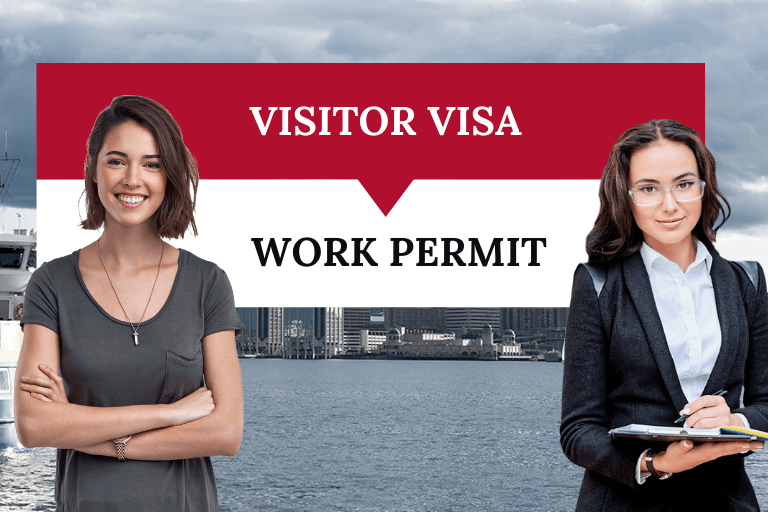

Visitor Visa to Work Permit Canada in 2024-2025
“Is it possible to convert a visitor visa to a work permit in Canada?”
Yes, it is possible. Foreign visitors in Canada with valid job offers can now apply for work permits without having to leave, thanks to a temporary policy extension until February 28, 2025.
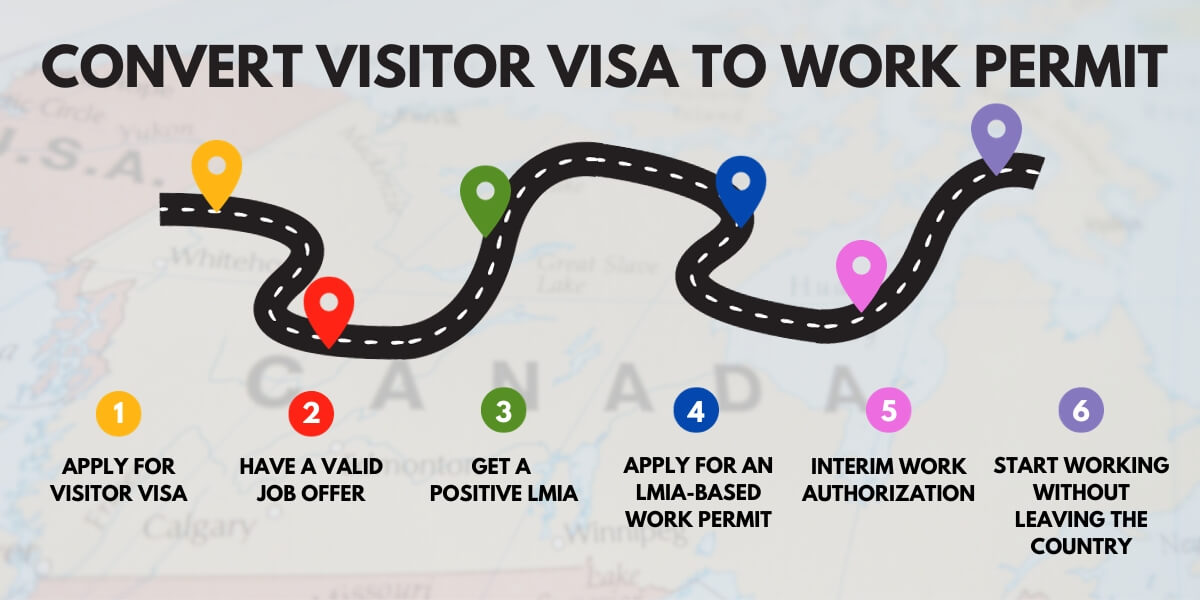
- Temporary Policy Extension: If you’re currently in Canada as a visitor and have received a valid job offer, you can apply for a work permit without leaving the country.
- Eligibility Criteria : You must have valid visitor status, a job offer supported by LMIA or an LMIA-exempt offer, and apply for an employer-specific work permit by February 28, 2025 .
- Conversion Steps : Apply for a Visitor Visa in Canada, consider requirements and fees, apply with necessary documentation, secure an LMIA-supported job offer, explore alternative pathways without LMIA (if needed), and apply for a work permit from within Canada.
- Post-Temporary Policy – Flagpoling : After the policy expires, individuals may need to go through a flagpole, a process involving exiting Canada through the US border, applying for a work permit, and re-entering Canada.
- Interim Authorization to Work : You can request interim authorization to work while waiting for your work permit approval.
What is Interim Work Authorization?
If you’re applying for a job in Canada and have recently visited there with a valid work permit, you can follow some special instructions to get an interim work authorization. This will allow you to start working for your new employer before your work permit is finalized.
To be eligible to apply, an applicant must:
- Have valid status in Canada as a visitor on the day they apply.
- Have a job offer supported by a labour market impact assessment (LMIA) or an LMIA-exempt offer.
- Apply for an employer-specific work permit no later than February 28, 2025.
- Meet all other standard admissibility criteria.
1. Apply for a Visitor Visa (TRV)
The first logical step to convert visitor visa to work permit in Canada is to become a Canadian visitor. You need to understand the following requirements before applying for a visitor visa (Temporary Resident Visa – TRV) for Canada.
Visitor Visa Fees and Requirements
- The application fee for a visitor visa is $100 CAD (~ 5,200 INR), while the biometrics charge is $85 CAD (~ 4,400 INR).
- A cost of $100 CAD per person is required to extend your visitor visa.
- You must pay a visa cost of $200 CAD (About 11065.45 INR) to regain your tourist status.
- Prove that you will leave the country after your visit.
- Prove that you have sufficient funds to maintain yourself and any accompanying family members while in Canada.
- Be in good health and be willing to conduct a medical exam if required.
- Not have any criminal record; be willing to get a police verification done.
- Be able to provide all supporting documents at the request of the visa officer.
Canada Visitor Visa Processing Times
TRV applications are generally processed within 30 days . However, this can vary based on factors like application type, applicant’s country, and application backlog. Always check the latest processing times on the official IRCC website. Remember, complete and accurate documentation can help avoid delays. Consult an immigration expert if needed.
It’s always best to check the most recent processing times on the official Immigration, Refugees and Citizenship Canada (IRCC) website .

Application Process for a Visitor Visa
- Decide whether you want to apply online or in person.
- Complete a visa application form with all of the necessary information and papers.
- Make a certified check or bank draught payment for the visa processing cost.
- Bring your passport, photos, and other documents to the nearest Canadian visa application center.
- You must provide your fingerprints and a photograph (biometrics)
- Go to the Canada visa application center and submit your visa application form.
- Get a receipt from the application center with your unique tracking number on it.
- Use this number to track your application online.
2. Getting a Job Offer and a LMIA
After you enter Canada, you have limited time to apply for a job and get a positive LMIA. Not to mention, getting a job offer is an extremely difficult process in itself. So it is better that you do your homework properly. Let’s explain this point in detail.
Research for the Job
- Understand the labour market opportunities in your destination.
- Match your NOC code with the in-demand jobs in that area.
- Apply for Jobs online through Indeed, LinkedIn, Glassdoor, etc.
- Apply directly to the employer’s website.
- Friends and family can help to find employment opportunities.
Related Topic: How to Get a Job Offer from Outside Canada?
Get a Positive LMIA
Even after enough job research, there are high chances that you won’t be able to get a job offer from a Canadian employer. Because an employer has to fulfill the LMIA Requirements to hire you, and not many employers are willing to sponsor temporary visitors.
Factors to improve your chances to get a work permit while on a visitor visa:
- You have exceptional skills that employers won’t find anywhere else.
- You have enough contacts to support you in Canada.
- You have hired someone to search for a suitable job for you.
Visitor Visa to Work Permit (without LMIA)
You can get an open work permit without LMIA only:
- If your spouse / common-law partner has a study permit and is studying in a DLI, you can apply for an open work permit as a temporary visitor.
- If your spouse / common-law partner has a work permit and is working in occupations specified in NOC 0, A, and B, you can apply for a work permit as a visitor visa holder.
- If your spouse / common-law partner is waiting for PR and has “ approval in principal ” status, you may apply for a work permit as a visitor.
- If you have applied for PR under Spousal Sponsorship, then you can apply for a work permit while you’re waiting for the decision.
Get Professional Help with a Visitor Visa or Work Permit
Apply for a Visitor Visa or a Work Permit with the Help of Licensed RCIC Experts.
3. Converting Visitor Visa to Work Permit in Canada
New temporary policy.
After you get a positive LMIA from a Canadian employer, you can apply for a work permit from inside Canada. On February 28, 2023 , IRCC announced that foreign nationals currently in Canada on a visitor visa and who have a valid job offer would continue to be able to apply for and receive a work permit without having to leave the country. The temporary public policy has been extended by two years until February 28, 2025.
What is Flagpoling?
After the temporary policy expires, you have to go through a process called Flagpoling . In this temporary, visitors must go out of Canada through the US border, apply for a work permit, and then re-enter Canada.
Using the flagpole process to activate a new Canadian work permit is legal. However, it is important to be truthful and provide accurate information during the process. Giving false information can lead to serious consequences. Please consult an immigration expert before attempting to flagpole or change your immigration status.
4. Interim Authorization to Work
We have discussed how to convert a visitor visa to a work permit in Canada. Now, let’s understand how Interim Work Authorization works. If you apply for a work permit in Canada while under visitor status, you must wait approximately 135 days to receive it. This means that you cannot work until your work permit is approved.
IRCC addressed this problem through an “ Interim Authorization to Work .” With that, you can obtain this authorization to work quickly. You can start working immediately if you have received an employer-specific job offer . It was introduced to address labour shortages, though it is not automatic.
The process for Interim Authorization to Work is as follows:
- Fill out this IRCC web form , which is available on the official website.
- Wait for IRCC to contact you. This may take up to 30 business days (6 weeks).
Take Professional Help from Licensed Consultants
We offer immigration assistance to those looking to settle in Canada. Keshav Sharma, a licensed and regulated Canadian Immigration Consultant with years of experience, leads our team. We can help with visa applications, work permits, or permanent residency. Contact our experts to learn more about how we can help.
FAQs: Visitor Visa to Work Permit
1. what happens if i stay longer than 6 months in canada as a visitor.
If you remain in Canada as a visitor for more than six months, you will be considered an overstayer or “ out-of-status “. Overstaying your authorized period can result in various consequences, such as:
- Loss of Visitor Status : Overstaying your authorized period violates your entry conditions and may result in deportation or other immigration consequences.
- Immigration Consequences : To avoid complications and stay compliant with Canadian immigration regulations, it’s crucial to follow the authorized duration of stay in Canada. Overstaying your permitted term may jeopardize your future travel plans to the country.
2. How many days does it take to convert a visitor visa to a work permit in Canada?
The standard processing time for online applications is usually 16-20 days . However, some applications may take longer due to additional processing requirements or complexity, and in such cases, it can take up to 15-20 weeks .
Trending Stories
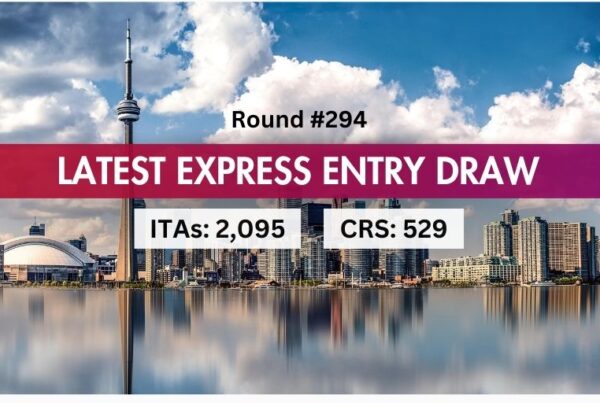
Sir currently I hold a F1 visa usa, I am in usa . I hold canada visitor visa as well. Now I am seeking work visa for Canada. I would like to move to Canada. Kindly guide further.
Hello Sunny, please send your detailed requirements to [email protected]
I want go to Canada, and work there by profession I am a Chef, please suggess me further details,how can I apply, and what is the process?
Hello Kumer, Please share your detailed inquiry with [email protected] or contact us here .
Hello Team, I have mailed but there was no response.Could you please check n reply
Dear Pratima,
I’m sorry to hear that you have not received a response to your email. I suggest that you reach out to Elaar Immigration using the contact form on their website at https://www.elaarimmigration.ca/contact-us/
Leave a Reply Cancel Reply
Save my name, email, and website in this browser for the next time I comment.
IMMIGRATION
- Express Entry
- BC PNP Program
- Provincial Nominee Program
- Business Immigration
- Caregiver Programs
- Atlantic Immigration
- Agri-food Pilot
- Move from the US
- Rural and Northern Immigration
- Study Permit
- Study Permit After a Long Gap
- LMIA Work Permit
- LMIA-Exempt Work Permits
- Post-Graduate Work Permit
- Startup Visa Canada
- Self-employed Visa Canada
- Intra Company Visa Transfer Canada
ACCREDITATIONS
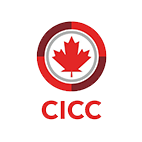
Greater Vancouver #205-14980 104 Ave, Surrey, BC V3R 1M9
Kamloops 615 Victoria Street, Kamloops, BC, V2C 2B3
Yukon 320 Keno Way, Whitehorse, YT Y1A 0S8
© 2024 Elaar Immigration Consulting Inc. All rights reserved
Language selection
- Français fr
Work permit: when you start working
From Immigration, Refugees and Citizenship Canada
- 1. About the process
- 2. Who can apply
- 3. How to apply
- 4. After you apply
- 5. Prepare for arrival
- 6. When you start working
On this page:
- Understand the conditions of your permit
Get a social insurance number
Canada’s labour laws, employment agreements, if you lose your job, health and safety, is your work safe, refusing dangerous work, if you get sick or hurt at work, farm workers’ rights, report abuse.
- Labour standards in Canada
Understand the conditions on your permit
Read your work permit carefully. It sets out all the conditions for working in Canada. If you don’t meet those conditions, you could be asked to leave Canada.
You can also apply to change the conditions of your work permit or apply to extend the permit .
If you choose to study while you work
You may be eligible to study without a study permit while you work.
To be eligible, you must
- a valid work permit that was issued on or before June 7, 2023, or
- The letter must have been issued on or before June 7, 2023.
- satisfy the terms and conditions of your work permit—except any conditions related to studying
Find out if you’re eligible for this measure.
The social insurance number (SIN) is a 9-digit number that you will need to work in Canada and to access government programs and benefits. You should apply for a SIN as soon as possible after you arrive in Canada.
To apply for your SIN, contact the nearest Service Canada office .
Understand your rights as a foreign worker
Get to know your rights.
Learn about your rights under the
- International Mobility Program (if you’re exempt from a labour market impact assessment)
- Temporary Foreign Worker Program (if you need a labour market impact assessment)
As a temporary foreign worker, you are protected by Canada’s labour laws.
Your employer
- must pay you for your work
- must make sure that your workplace is safe
- can’t take your passport or work permit away from you
Each province and territory has an employment or labour standards office that deals with labour and employment laws. They can talk to you about fair pay, hours of work, rest periods and working conditions, and provide other services as well.
You don’t need your employer’s permission to contact these offices or go to their websites . You also can’t be punished or deported for contacting them.
Most occupations are covered under provincial and territorial laws. However, federal labour and employment laws may apply if you work for
- the federal government
- a company that transports goods between provinces
- a telecommunications company
- most businesses owned and run by the federal government
If you have an employer-specific work permit, your employer must give you an employment agreement. You and your employer must sign the agreement, which should include
- the details of your job
- the conditions of your employment
- the highest number of hours you will work in a week
- how much you will be paid for your work
The laws on hours of work and overtime (extra time or time worked after regular hours) depend on the province or territory you are working in.
Your agreement may also have details about any money coming out of your pay for programs like the Canada Pension Plan and Employment Insurance .
Always keep a copy of your agreement for your records. You and your employer must always follow the agreement. If you disagree about work details in the future, having a copy may help you.
Contact your local employment or labour standards office to learn more about employment contracts.
In most cases, your employer needs to give you written notice before your last day of work or pay you for that time instead. This is called termination pay.
Your employer does not have to warn you when you are being let go for a “just cause.” For example, you can be let go for serious misconduct or missing work without a good reason.
If you have a contract for a specific period or a specific job, your employer does not have to give you notice when your contract ends.
The rules about notice of termination are also set by each province and territory.
If your employer does not follow the law when they dismiss you, you can complain to the local employment or labour standards office. If you are covered by a union contract, you may have to make a formal complaint through the union instead.
Your employer does not have to give you a place to live unless you are a temporary farm worker in the Seasonal Agricultural Worker Program .
If you are given room and board, your employer may take part of the cost from your pay. In most provinces, the amount they can charge for meals and board is limited. All pay deductions must be noted in your contract.
All workers in Canada have the right to a safe and healthy workplace. There are laws to protect workers from danger.
Provincial, territorial and federal governments each have their own laws and ways of looking into health and safety matters.
To help you decide if your workplace is safe, ask yourself:
- Have I been properly trained for the job I am doing?
- Have I been given the right safety equipment to do the job?
- Do I feel unsafe when doing my job?
- Do I work close to dangerous materials?
To report an unsafe workplace, contact your local employment or labour standards office .
Your employer cannot force you to do work that’s dangerous. Your employer must look into any danger that’s reported in the workplace. You have the right to refuse to do the work until
- you and your employer agree that the danger is removed
- you feel the problem no longer exists
- a government official tells you that it is safe to do the work
Tell your supervisor as soon as possible and get medical attention. Your employer must give you access to a health care provider (like a doctor, nurse or pharmacist) by, for example
- giving you time off to seek medical attention
- making a phone available to call emergency services (ambulance)
- giving you information on how to get health care
- helping you get to the health care provider
You can speak privately with a health care provider, without your employer.
Most provinces and territories provide workers’ compensation benefits. Workers’ compensation plans give you help (medical or wage benefits) if you are hurt on the job or if your job causes you to get sick. Your employer is not allowed to take any money from your pay for these plans.
In some provinces and territories, employers don’t need to offer you workers’ compensation benefits. If so, this must be clearly written in your employment contract.
Contact your local employment or labour standards office to learn more about workers’ compensation benefits.
Some farm workers in Canada have special rights under the Seasonal Agricultural Worker Program .
If you suspect that your employer has not been respecting your rights as a temporary foreign worker or has been misusing the program, report it to us .
If you think you’re being abused or at risk of being abused, you may be able to apply for an open work permit for vulnerable workers to help you leave an abusive work situation.
Employment standards in Canada
Contact the employment standards branch in the province or territory where you work unless you work for a federally regulated businesses or industry . In that case, you should contact the Federal Labour Program .
Employment and Social Development Canada Federal Labour Standards Toll Free: 1-800-641-4049
If you do not work for a federally regulated business or industry, the employment standards that regulate your conditions of work are likely covered by a provincial or territorial employment standards office found below.
Labour Employment Standards Branch Toll free: 1-877-427-3731 Fax: (780) 422-4349 TDD/TDY: 780-427-9999 (in Edmonton)
Ministry of Jobs, Tourism and Skills Training and Minister Responsible for Labour Employment Standards Branch Toll free: 1-833-236-3700 Outside British Columbia: (250) 612-4100
Manitoba Labour and Immigration Employment Standards Telephone: (204) 945-3352 (Winnipeg) Toll free: 1-800-821-4307 (outside Winnipeg) Fax: (204) 948-3046
Department of Post-Secondary Education, Training and Labour Employment Standards Branch Telephone: (506) 453-2725 (Fredericton or outside New Brunswick) Toll free: 1-888-452-2687
Advanced Education, Skills and Labour Labour Standards Division Telephone: (709) 729-2743/729-2742 Toll free: 1-877-563-1063
Education, Culture and Employment Employment Standards Telephone: (867) 767-9351 option 3 Toll free: 1-888-700-5707 Fax: (867) 873-0483
Labour and Advanced Education Labour Standards Division Telephone: (902) 424-4311 Toll free: 1-888-315-0110 Fax: (902) 424-0648
Department of Justice Labour Standards Office Telephone: (867) 975-7293 Toll Free: 1-877-806-8402 Fax: (867) 975-7294 ( Note: minimal information on website)
Ministry of Labour Employment Standards Branch Telephone: (416) 326-7160 (Greater Toronto Area) Toll free: 1-800-531-5551 TTY: 1-866-567-8893
Communities, Cultural Affairs and Labour Employment Standards Branch Telephone: (902) 368-5552 Toll-free: 1-800-333-4360 Fax: (902) 368-5476
Commission des normes, de l’équité, de la santé et de la sécurité du travail (CNESST) Toll free: 1-844-838-0808
Advanced Education, Employment and Labour Labour Standards Telephone: (306) 787-2438 (Regina) Toll free: 1-800-667-1783 Fax: (306) 787-4780 (Regina)
Department of Community Services Employment Standards Branch Telephone: (867) 667-5944 Toll free: 1-800-661-0408, extension 5944
Page details
Our partner, Cigna, offers newcomers peace of mind. Get a free quote !
Find the best immigration program for you. Take our free immigration quiz and we’ll tell you the best immigration programs for you!
Canada extends meaure allowing visitors to apply for a work permit
A pandemic-related measure is being extended until 2025

By Shelby Thevenot
Posted on February 28, 2023
Updated on January 30, 2024
Rate article
Share article, visitors in canada can continue to apply for a work permit without needing to leave the country, provided they have a valid job offer..
The measure also applies to people who held a work permit within the last 12 months and who are still in Canada on visitor status.
This COVID-era temporary public policy was supposed to expire February 28, 2023. However, it has been extended until February 28, 2025. It allows visitors to get a job in Canada without having to leave the country.
Before Canada introduced this policy, you would typically need to apply for your initial work permit before arriving in Canada. If you were already in Canada with visitor status when approved for a work permit, you would need to leave the country in order to get your work permit.
With this policy in place, leaving Canada isn’t necessary.
How to convert visitor visa to work permit in Canada
To be eligible to apply to transfer your visitor visa to a work permit in Canada, an applicant looking to benefit from this temporary public policy must meet the following requirements:
- You need to have valid status in Canada as a visitor on the day you apply
- You need to have a job offer that is supported by a labour market impact assessment (LMIA) or an LMIA-exempt offer of employment
- You need to submit an application for an employer-specific work permit no later than February 28, 2025
- And, you must meet all other standard admissibility criteria (i.e. criminal and medical admissibility)
Applicants who currently have visitor status but who have held a valid work permit in the past 12 months can follow special instructions on the IRCC website to get what’s called “interim work authorization” to start working for their new employer before their work permit application is finalized.
Job vacancies in Canada
Employers in Canada are facing significant labour shortages, during a period of economic expansion. By leaving this policy in place, foreign nationals can get a job in Canada while on a visitor visa, and not have to leave.
This not only supports newcomers who may want to work and eventually immigrate to Canada, but it also eases the burden on employers who have job vacancies.
According to Statistics Canada’s most recent job vacancies report , there are more than 800,000 job vacancies in Canada. The highest vacancy rates are in the accommodation and food services, as well as the healthcare sectors.
Are you looking for a job in Canada? Check out the listings on the Moving2Canada Job Board .
Want to be the first to find out about the latest Canadian immigration news? Create a free Moving2Canada account and sign up for our newsletter!

Stay up to date with our free newsletter.
Get immigration updates & new resources to help you move to Canada and succeed after arrival.

Get immigration help you can trust
About the author.

Shelby Thevenot
Advertisement
Related articles
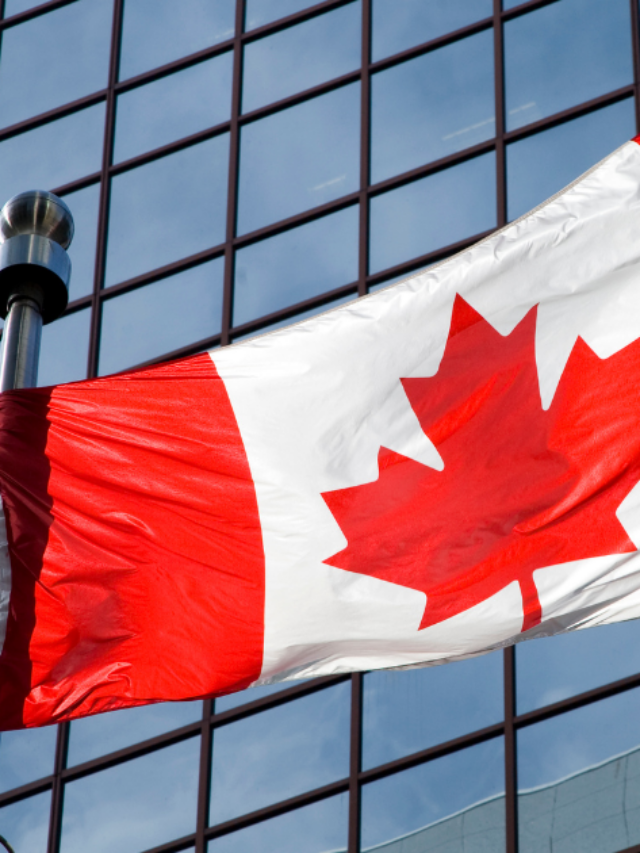
Express Entry Draw Weekly Recap – April 22 to 26, 2024

Immigration and The Loneliness Epidemic: Challenges Women Newcomers Are Facing (& How To Overcome Them)

Latest Express Entry Draws Results
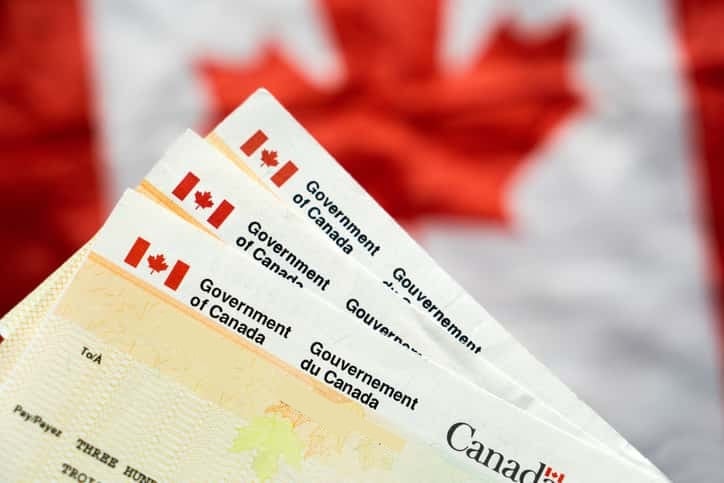
Category-Based Express Entry Invitations To Dominate 2024

Canada Abroad
Canada Abroad is a transparent Canadian immigration consultancy with advice you can trust. Led by Deanne Acres-Lans (RCIC #508363), the team delivers professional, regulated, and efficient service.

Doherty Fultz Immigration
Led by Anthony Doherty (RCIC #510956) and Cassandra Fultz (#514356), the Doherty Fultz team uses their 40+ years of experience to empower you towards settling in Canada.

Perez McKenzie Immigration
Led by Jenny Perez (RCIC #423103), Perez McKenzie Immigration is a Canadian immigration consultancy based in British Columbia, with offices in Vancouver and Whistler.
Get your immigration questions answered by an expert

Find the best immigration program for you
Take our free immigration quiz and we'll tell you the best immigration programs for you!

Get matched to job opportunities
Get matched to job opportunities from Canadian employers who are seeking to hire people with your skills.

Access our immigration roadmaps
Our immigration roadmaps will teach you the basics of Express Entry, study permits, and more! Take control of your own immigration process.
Unlock exclusive resources with a free account.
Book a consultation with one of Moving2Canada's recommended Canadian immigration consultants. You deserve the best in the business.

Get the latest news & updates
Sign up for the Moving2Canada newsletter to get the latest immigration news and other updates to help you succeed in Canada.
Popular Topics
Search results
results for “ ”
Immigration
Learn everything you need to know about Canadian immigration
If you need help with your immigration, one of our recommended immigration consultant partners can help.
Calculate your estimated CRS score and find out if you're in the competitive range for Express Entry.

Take the quiz

Your guide to becoming a student in Canada
Take our quiz and find out what are the top programs for you.

Watch on YouTube
This guide will help you choose the best bank in Canada for your needs.

Get your guide
News & Features
latest articles

Our Partners
Privacy overview.
Search Here

(647) 699-1697
Book Consultation
Welcome to Visa Immigration - A Canada Immigration Company
Talk to an expert
Book A Consultation
Mon - Fri: 9AM -5PM
- Canada Express Entry
- Spouse and Family Sponsor
- Student Visa Immigration
- Business Visa Immigration
- Humanitarian & Compassionate Grounds
- Tourist Visa
- Federal Skilled Worker
- Downtown Toronto
- Richmond Hill
- Scarborough
- Mississauga
Step-by-Step: How to Turn Your Canadian Visitor Visa into a Work Permit

If you are currently in Canada on a visitor visa and looking to work, you may be wondering what your options are for staying in the country and getting a job. While it can be a complicated process, turning your Canadian visitor visa into a work permit is possible, allowing you to stay and work legally. This blog post will provide an in-depth, step-by-step guide to help you turn your visitor visa into a work permit.
Step 1: Apply for a Visitor Visa (TRV)
The first step to converting a visitor visa to a work permit in Canada is to become a Canadian visitor. This means that you will need to apply for a Temporary Resident Visa (TRV), which allows you to enter Canada for a temporary period as a tourist, student, or worker. The TRV is required for citizens of certain countries, so be sure to check if you need one before you apply.
To apply for a TRV, you will need to pay a $100 CAD application fee and an $85 CAD biometrics charge. Additionally, if you want to extend your visa or regain tourist status after your visit, there is a $100 CAD fee and a $200 CAD fee, respectively. You will also need to provide proof that you intend to leave Canada after your visit, have sufficient funds to support yourself during your stay, are in good health, have no criminal record, and can provide supporting documents as required.
The processing time for a TRV application is usually 16-20 days, but it can take up to 135 days in some cases. To apply, you can choose to do so online or in person at a Canadian visa application center. You will need to complete a visa application form, make a certified check or bank draft payment, and provide your passport, photos, and other required documents. You will also need to provide your fingerprints and photograph (biometrics) and submit your application form. You can track your application online to see its progress.
Once you have obtained your TRV and have entered Canada, you can start looking for a job and applying for a work permit. Remember that you will need to meet certain eligibility requirements to convert your visitor visa to a work permit.
Step 2: Getting a Job Offer and an LMIA
One of the biggest challenges when it comes to converting a Canadian visitor visa into a work permit is finding a job offer. It’s important to thoroughly research and explore all possible job opportunities to increase your chances of finding a job that aligns with your skills and experience.
Some of the popular job search platforms that you can use to find a job in Canada include LinkedIn, Glassdoor, and the employer’s website. You can also reach out to your professional network, friends or relatives living in Canada or attend career fairs to expand your job search options.
However, getting a job offer is not enough for a work permit. The employer must also provide a Labor Market Impact Assessment (LMIA), which is a document that verifies that there is no Canadian worker who can perform the job. The LMIA process is quite stringent and can be challenging, which is why it’s crucial to explore alternatives to increase your chances of getting a work permit while on a visitor visa .
If you possess exceptional skills that are in demand, you may have a higher chance of securing a work permit. You can also increase your chances by reaching out to your contacts in Canada and asking for help with your job search. You can also hire an immigration consultant who specializes in job searching and can assist in securing a job offer.
If you are applying for a work permit in Canada without an LMIA, you can do so through certain immigration programs such as the Spouse or Common-Law Partner in Canada Class, where the applicant’s spouse or common-law partner has a study permit, work permit, or is waiting for permanent residency. Alternatively, you can apply through the International Mobility Program if you fall under certain categories, such as NAFTA professionals, intra-company transferees, and international experience Canada (IEC) participants.
Overall, getting a job offer and an LMIA can be a challenge, but with the right approach, thorough research, and assistance from experts, you can improve your chances of turning your Canadian visitor visa into a work permit.
Step 3: Converting Visitor Visa to Work Permit in Canada
If you are a foreign national currently in Canada on a visitor visa and have received a valid job offer, you have the opportunity to convert your visitor visa into a work permit without having to leave the country.
This process is known as Flagpoling, the term given to when a person already in Canada leaves and returns without crossing into the USA in order to activate a new permanent resident status, be granted a renewed study or work permit, or a change of status, for example from visitor to work permit holder.
By Flagpoling, individuals can avoid the need to travel back to their home country. They can transition smoothly from being a visitor to a temporary worker in Canada. However, it’s important to note that the Flagpoling process can be time-consuming and may require some planning. Additionally, it’s essential to ensure that you have all the necessary documents and meet the eligibility requirements for the work permit.
Converting your visitor visa to a work permit in Canada through the Flagpoling process can provide a convenient and efficient way to transition from visitor status to a temporary worker. Following the proper steps and meeting the requirements can make this process as smooth as possible and continue your career journey in Canada.
Step 4: Interim Authorization to Work
Once you have successfully applied for a work permit in Canada under visitor status, you may be eager to start working right away. However, it’s important to note that the process of receiving a work permit can take up to 132 days. This can be a significant waiting period, especially if you have already secured a job offer.
There is a solution called the Interim Authorization to Work to bridge this gap. This allows individuals with an employer-specific job offer to start working immediately while they await their official work permit.
Understanding that the Interim Authorization to Work is not automatic is crucial. To obtain it, you will need to fill out the IRCC (Immigration, Refugees and Citizenship Canada) web form available on the official website. This form will require you to provide details about your job offer, including the employer’s contact information and your specific duties.
Once you have submitted the form, you will need to wait for IRCC to contact you. It’s important to note that this waiting period can take up to 30 business days, which equates to approximately six weeks.
During this waiting period, it’s advisable to stay in contact with your employer to keep them informed about the progress of your application. Once you receive your Interim Authorization to Work, you will be able to legally begin working in Canada until your official work permit is issued.
If you have any questions or need assistance with converting your visitor visa to a work permit in Canada, don’t hesitate to reach out to Visa Immigration. Our team of experts is well-versed in Canadian immigration laws and processes and can provide you with the guidance and support you need. Contact us today for a consultation, and let us help you make your dream of working in Canada a reality.
Do I need a visa if I’m just travelling through Canada on my way to another country?
The start-up visa route: a step-by-step application guide for immigration, our services.
- Sponsorship
- Immigration Appeals
Our Headquarters
110 Sheppard Ave E Suite #630, North York, ON M2N 6Y8
Phone: (647) 699-1697
Schedule a Meeting
Copyright © 2019 www.visaimmigration.ca . All Rights Reserved. Privacy Policy . Ontario Immigration . Canada Immigration
Montreal, Quebec
+1(438) 476-8418
+1(438) 836-3284
Get Free Information

- Apr 27, 2023
Canadian Work Permit: Answering Your Frequently Asked Questions
Updated: Apr 10
Navigating the Work Permit Process in Canada
Your go-to guide for work permits in canada: faqs answered.
Are you planning to work in Canada? If so, you may need a work permit to do so. In this post, we'll answer some common questions about how to apply for a work permit in Canada.

How do I apply for a work permit?
In most cases, you'll need to apply for a work permit before entering Canada. However, in some cases, you may be able to apply at the border. To apply for a work permit, you'll need to provide various documents and meet certain requirements. These may include:
A job offer from a Canadian employer
Proof that you meet the requirements for the job
A valid passport or travel document
A medical exam (in some cases)
Biometrics (fingerprints and a photo)
To apply for a work permit, you'll need to complete an application form and pay a fee. You can apply online, by mail, or in person.
Are there any conditions on my work permit?
Yes, there may be conditions on your work permit. These may include:
The type of work you can do
The employer you can work for
Where can you work
How long you can work
You can find a list of all possible conditions in Regulation 185 of the Immigration and Refugee Protection Regulations. Even if you have no specific conditions on your work permit, there are still standard conditions that apply to all work permit holders. For example, you cannot work for an employer in a business where there is a risk of sexual exploitation.
How do I remove medical conditions from my open work permit?
If you have a medical condition on your work permit, you may be able to remove it by following these steps:
If you haven't left your country of residence, get an upfront medical exam from a panel physician
Bring proof that you've had a medical exam when you travel to Canada
If you're already in Canada, get an upfront medical exam from a panel physician
Apply to change your work permit conditions, and include all the required documents
Can I apply for a work permit when I enter Canada?
In general, you should apply for a work permit before you travel to Canada. However, in some cases, you may be eligible to apply at a port of entry. To be eligible, you must meet certain requirements.
Can I apply for a work permit from inside Canada?
Absolutely, you have the provision to apply for a work permit from within the Canadian borders. In response to the COVID-19 pandemic, the Canadian government has made a provisional amendment, permitting visitors to submit their work permit applications from within the country. This temporary accommodation is effective through February 28, 2025, facilitating a smoother transition from visitor to worker status during these challenging times.
Do I need a medical exam to get a work permit?
You may need a medical exam to get a work permit if you'll be working in a job where it is important to protect public health (such as health services, child care, or primary or secondary education) or if you're from a designated country or territory. If you need a medical exam, an officer will tell you and provide instructions on how to proceed.
Who needs a Labour Market Impact Assessment?
Employers of some types of temporary workers need to get a Labour Market Impact Assessment (LMIA) before the worker applies for a work permit. An LMIA is a document from Employment and Social Development Canada that gives the employer permission to hire a temporary worker. If you're a worker, you can answer a few questions to find out if your employer needs an LMIA.
What is a port of entry (POE) letter?
A port of entry (POE) letter is a letter of introduction that you may receive from IRCC if you've been approved for a study permit, work permit, or super visa. It's not your actual permit, but it lets the border services officer know that you've been approved to enter Canada.
How long is my POE Letter valid?
The validity of your POE Letter is indicated in the "Permit validity" box. You must enter Canada before this date. If the validity date has passed and you haven't yet entered Canada, you'll need to submit a new application. You can't extend the validity date of your POE Letter. Your POE Letter will be valid for the requested length of your work permit, study permit, or super visa.
How do I change employers?
To change employers, you'll need to apply to change the conditions of your work permit. Before you apply, you'll need some information and documents from your new employer. If your employer needs a Labour Market Impact Assessment (LMIA) to hire you, they'll need to give you a new job offer letter, a new LMIA number, and a new contract. If your employer doesn't need an LMIA, they'll need to give you the offer of employment number they received when they submitted your offer of employment.
Can I have a work permit and a study permit at the same time?
Yes, you can have a work permit and study permit at the same time if you're eligible for both permits and can show the officer that you can balance work and studies. When you apply, you'll need to include a letter explaining how you'll do this and how you'll balance your work schedule with your studies.
In summary , applying for a work permit in Canada can be a complex process. It's important to make sure you meet all the requirements and provide all the necessary documents. If you have any questions or need help with your application, consider consulting with an immigration lawyer or a regulated immigration consultant. Good luck with your application!
At Immigrative , we understand that obtaining a work permit in Canada can be a complex and challenging process. That's why our experienced immigration professionals offer a comprehensive range of services to guide you through the entire process, from determining the right type of work permit to apply for to preparing and submitting your application and ensuring compliance with Canadian government requirements. Whether you're an individual looking to work in Canada or an employer seeking to hire foreign workers, we can help you navigate the complexities of the Canadian immigration system and achieve your goals. Contact us today to learn how we can help make the process simpler and more efficient for you.
Disclaimer:
This blog post is intended for general informational purposes only and does not constitute legal advice. For personalized advice regarding your specific immigration situation, it is recommended to consult with an authorized immigration professional.
About the Author:
This blog post is authored by Hossein Alavi, RCIC , a seasoned Regulated Canadian Immigration Consultant and the founder and CEO of Immigrative Visa Services Inc. and EduPal Canada. With over ten years of experience in the education and immigration sectors, he is dedicated to assisting individuals and companies with their Canadian immigration needs. Contact Immigrative Visa Services Inc. today to schedule your consultation and take the first step toward realizing your Canadian dream.
Related Posts
Provincial Nominee Programs (PNPs) That Don't Require a Job Offer
Alberta Rural Renewal Stream: A Comprehensive Guide to Immigrating to Rural Communities
Employer Job Offer: In-Demand Skills Stream – A Pathway to Settle in Ontario
Comentários
Join the club.
Subscribe to our club for exclusive insights and updates on navigating your immigration journey.
Thanks for submitting!
Our Clients Say
(Translated by Google) It is a super serious and recommended agency, thanks to them in August we will arrive in Canada
Daniel Sarmiento
Google Review >>
(Translated by Google) I want to share my experience from the beginning, they were always very attentive with the messages, calls in the process, a very good quality, the professionalism is noticeable, thanks to this, today I am very happy since I will be able to meet my mother, what an excellent service, highly recommended.
Andres Moreno
- Meet our partners
- Advertise with us
Top 10 questions about Canada’s work permit process

A work permit allows a foreign national to work in Canada temporarily. Navigating Canada’s work permit options and process can be difficult. Here are answers to some of the questions asked most often about Canada’s work permit process.
Schedule a Free Work Permit Consultation with the Cohen Immigration Law Firm
1. How much is the processing fee for a work permit in Canada?
The cost for work permits in Canada is the same regardless of the industry in which you work or the stream under which you apply.
The processing fee for a work permit is $155 CAD per person and $100 CAD per person for an open work permit .
2. What documents do I need for a work permit in Canada?
In order to apply for a work permit, the applicant must submit the following documents and forms:
- A valid travel document or passport
- Submission of biometric fingerprints and photo
- Evidence that you meet the requirements for your prospective job
- Certificat d’Acceptation du Quebec , if applicable
- Proof of relationships with all spouses, children or common-law partners
- Completed Application For Work Permit Made Outside of Canada (IMM 1295) form, if applying from outside of Canada
- Completed Document Checklist (IMM 5488)
- Completed Family Information (IMM 5645) form
- Completed Schedule 1 – Application for Temporary Resident Visa form. This form must be completed by: the principal applicant, his/her spouse or common-law partner and all dependant children older than 18. This form must only be completed by foreign nationals who require a temporary resident visa to enter Canada.
You may also need to submit required documentation from your employer.
3. Can I apply for a Canadian work permit without a job offer?
Most candidates will require a job offer by a Canadian employer, usually supported by a Labour Market Impact Assessment (LMIA). The purpose of an LMIA is to make sure that the hiring of a foreign worker will have a positive or neutral effect on the Canadian labour force.
However, there are some exceptions to this requirement, where foreign workers can apply for a work permit without an LMIA, or a job offer.
For example, a recent graduate from a Canadian Designated Learning Institution (DLI) may be eligible for a Post-Graduation Work Permit (PGWP), which does not require a job offer. Similarly, the spouse of someone already on a Canadian work or study permit may be eligible for a work permit without a job offer.
4. Who is eligible for an open work permit in Canada?
You may be eligible for an open work permit if you:
- Are an international student who graduated from a Designated Learning Institution (DLI) and are eligible for the Post-Graduation Work Permit Program (PGWP)
- Are a student who’s no longer able to meet the costs of your studies (destitute student)
- Applied for permanent residence in Canada
- Are a dependent family member of someone who applied for permanent residence
- Are the spouse or common-law partner of a skilled worker or international student
- Are the spouse or common-law partner of an applicant of the Atlantic Immigration Pilot Program
- Are a refugee, refugee claimant, protected person or their family member
- Are under an unenforceable removal order
- Are a temporary resident permit holder
- Are a young worker participating in special programs
5. Can I bring my family to Canada on my work permit?
If you are applying for a work permit and have a valid job offer from a Canadian employer, you may be eligible to have your spouse and dependent children accompany you to Canada.
Your spouse or partner may also be eligible to apply for an open work permit, allowing him or her to work for almost any employer in Canada. Dependent children of temporary foreign workers may also be eligible for a work permit provided they meet certain criteria.
6. What are the types of work permits in Canada?
The Canadian government has two categories of work permits: LMIA supported (or closed) work permits , and LMIA-exempt (or open) work permits . As previously explained, the LMIA demonstrates that the issuance of a work permit to a foreign national will not have a negative impact on the employment and wages of Canadian workers.
The Temporary Foreign Worker Program (TFWP) is the work permit program that requires an LMIA, while the International Mobility Program (IMP) does not require an LMIA.
For example, under the IMP, there are LMIA-exempt work permits that result from free trade agreements, such as the Canada-United States-Mexico Agreement (CUSMA). This agreement allows foreign workers to apply for a work permit without their employer having to obtain an LMIA.
7. What is the fastest work permit in Canada?
The Global Talent Stream provides work permits that bring foreign nationals to Canada on temporary work permits to fill specific labour market needs. The Global Talent Stream is a stream within the TFWP.
The Global Talent Stream allows certain skilled workers to obtain a work permit within two weeks of applying, as the applications are typically processed within 10 business days.
There are two categories under the Global Talent Stream, Category A and Category B. Category A is for high growth companies that can demonstrate a need to recruit unique specialized talent from abroad. Category B is for employers looking to hire certain highly skilled foreign workers for occupations on the Global Talent Occupations List , which have been determined to be in-demand and for which there is insufficient labour supply in Canada.
8. How many months does it take to process Canadian work permits?
Canadian work permit processing types are typically processed within one to nine months. The processing time starts the day that Immigration, Refugees and Citizenship Canada (IRCC) receives your completed application and ends when they make a decision.
Processing times will vary based on:
- The type of application submitted
- If the application is complete
- How easily IRCC can verify your information
- How long you take to respond to any requests or concerns
9. Can I change my status from visitor to worker in Canada?
A visitor may apply for a Temporary Resident Visa (TRV) and then subsequently apply for a work permit, which would change their status from visitor to worker.
You can do this by applying for a work permit within Canada. Once you have a job offer, you must make sure you meet the eligibility criteria for a work permit. If you are eligible, you can submit an application for a work permit.
10. Can I get permanent residence while being in Canada on a work permit?
Work permit holders in Canada can apply for Canadian permanent residence (PR). There are a few immigration programs that are tailored for temporary foreign workers.
One of the best ways to obtain PR in Canada is through the Canadian Experience Class (CEC).
Through the CEC pathway, your Canadian work experience will play a big role in being granted PR.
To apply for PR under the CEC, foreign nationals must meet the following requirements:
- Have at least 12 months of full-time skilled work experience in Canada gained in the three years prior to applying.
- Meet or exceed the required level of language skills according to the National Occupational Classification (NOC) skill level of your work experience.
- LMIA-exempt
- open work permit
- permanent residence
- work permit
- Do you need Canadian immigration assistance? Contact the Contact Cohen Immigration Law firm by completing our form
- Send us your feedback or your non-legal assistance questions by emailing us at [email protected]

- Life in Canada

- Express Entry

- Family Sponsorship
- Citizenship
Language selection
- Français fr
If I am a business visitor, do I need a work permit to work in Canada?
You do not need a work permit to carry out business activities related to your job back home, such as meeting clients of your company or visiting job sites. However, if you plan to carry out secretarial, managerial, technical or production activities or stay longer than six months in Canada, you have to apply for a work permit . In both cases, if you are from a country that requires a visa to visit Canada, you must apply for a temporary resident visa .
New entry requirement now in effect
Visa-exempt foreign nationals need an Electronic Travel Authorization (eTA) to fly to or transit through Canada by air. Exceptions include U.S. citizens and travellers with a valid Canadian visa. Canadian citizens, including dual citizens , and Canadian permanent residents cannot apply for an eTA.
Did you find what you were looking for?
If not, tell us why:
You will not receive a reply. Telephone numbers and email addresses will be removed. Maximum 300 characters
Thank you for your feedback
Answers others found useful
- Do I need a visa to visit Canada?
- Do I need a Canadian visa if I have a United States visa?
- How do I apply for an eTA for travel to Canada?
- I am visiting the U.S. I want to come to Canada. Do I need an eTA?
- Do I need a visa if I am travelling through Canada without stopping or visiting?
- How do I help a family member or friend apply to visit Canada?
- I am travelling with my minor child without my spouse. What documents must I present?
- What’s the difference between a visitor visa and a visitor record?
- Do I need to apply for both a visitor visa and an eTA?

How-to video

Form and guide
- Application for a temporary resident visa
Glossary term
- Multiple-entry visa
- Single-entry visa
- Temporary resident
(403) 265-6641

Regulated Canadian Immigration Consultants
Visitor Visa to Work Permit Canada

Canada Permanent Residence Application Fees Increase

Alberta PNP Fees Update

Alberta PNP Job Offer and Employment Requirements

How much money is needed for a visitor visa to Canada?


Alberta's New AAIP Tourism and Hospitality Stream

Visa for Romantic Partner to Visit Canada

Intention to Return to Canada – Sponsoring a Spouse or Common Law Partner from overseas
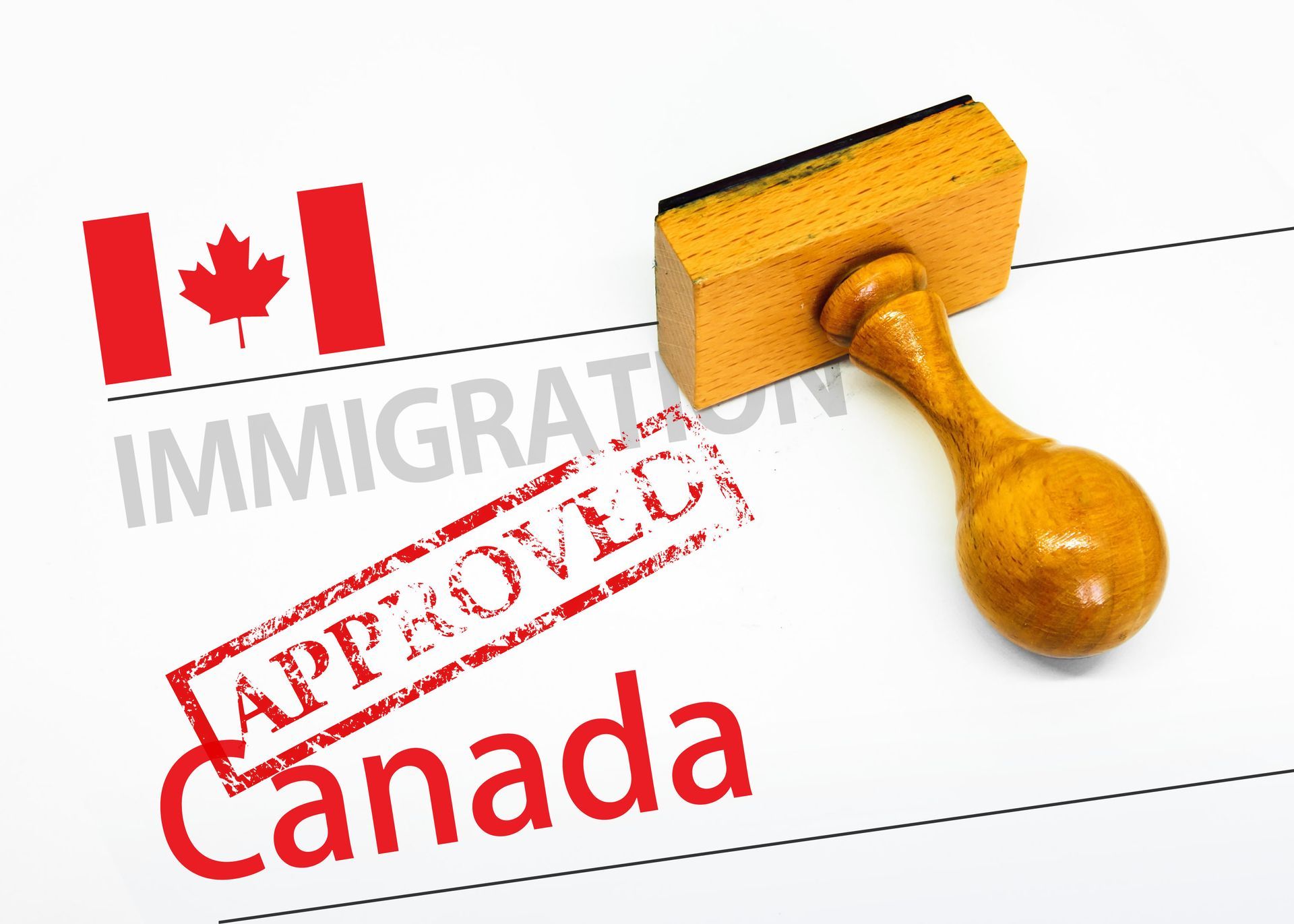
IMM 5406 Additional Family Info Guide

Buying Property in Canada as a Foreign National
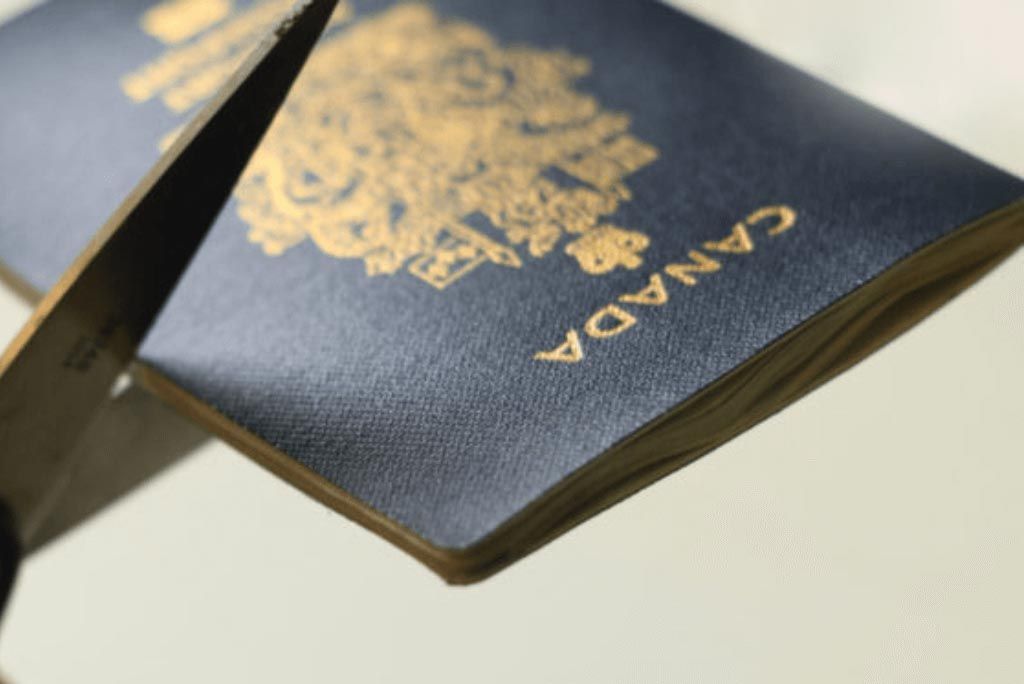
Renounce Canadian Citizenship | How to Renounce & Revoke Citizenship
Are you ready, to find the way to successful immigration, it all starts with a one-on-one consultation with a canadian immigration expert., or call us at (403) 265-6641.

Frances Murry Wipf, Maria Georgina Rico Espinosa & Pui Ying Tan are members of the College of Immigration & Citizenship Consultants
Verify Status with the College of Immigration and Citizenship Consultants
[email protected]
+1 (403) 265-6641
How Can We Help You?
Consultation
File Management
File Review
Immigration Information
Immigration Blog
Program Options
Express Entry
Provincial Nominee Program s
Family Sponsorship Canada
Canadian Citizenship
Permanent Residency
Student Visa
Work Permit
PNP Programs
Testimonials
CALGARY OFFICE
#300, 8 Varsity Estates Circle NW Calgary, Alberta T3A 2Z3
CANMORE OFFICE
201-50 Lincoln Park Canmore, Alberta T1W 3E9
All Rights Reserved | The Way Immigration | In Partnership with CCC
You are using an outdated browser. Please upgrade your browser to improve your experience.
Forgot Password?
You can reset your password here.

Email was Sent
Please check Your email
Come to Canada
Get a free e-book to get you started on your journey!
We take the security of your personal information very seriously. All data and information disclosed on this site are highly confidential. Once you personal data is stored, we employ highly secure servers that restrict access to potential third parties.
Sign Up To Our Newsletter Today & Get a Free e-Book

Canadianvisa.org
We Make Immigration Simple
2020-12-11T01:00:00
Do you want to work in Canada? If so, you'll more than likely need to apply for a Canadian work permit. Follow our 6 simple steps for a stress-free application.
- Work in Canada
6 Simple Steps to Apply for a Canadian Work Permit
Do you have your heart set on working in Canada? If so, then chances are you’ll need to apply for a Canadian work permit. Canada has various programs and streams that allow foreign workers to migrate to Canada and work in certain occupations for a short period of time under.
This extensive guide to Canada’s work visa will highlight what your options are to work in Canada, whether or not you need a work permit, what the requirements are, the steps you need to take to apply for a work permit as well as answer any questions you may have.
There are currently thousands of jobs in Canada for immigrants. Whether you’re skilled or unskilled, if you’re qualified, have the experience, and meet the general requirements of your chosen visa program, the opportunities are endless.
Another great draw for temporary workers is that your spouse or partner may be eligible to apply for an open work permit and work alongside you in Canada and if your children will be able to attend school without you having to apply for an additional study permit which means that you’ll be able to live and work in Canada and potentially apply for permanent residence should you acquire sufficient Canadian work experience. But before we get ahead of ourselves, let's take a look at everything you need to know about how to apply for a Canadian work permit, from start to finish.
Fast Navigation:
- What is the Temporary Foreign Work Permit Program?
- Temporary Foreign Work Permit Streams
- Types of Work Permits
- Am I Eligible?
- Canadian Work Permit Exemptions
- Work Permit Document Requirements
- How to Apply for a Work Permit
- Indemand Temporary Work in Canada;
- Asked & Answered: Facts About the TFWP
Your Journey to Canada Starts Here
1. what is the temporary foreign work permit program.

The Temporary Foreign Work Permit Program (TFWP) is run by Immigration Refugees and Citizenship Canada (IRCC) as well as Employment and Social Development Canada (ESDC). It was created to help Canadian employers hire talented foreign workers in in-demand jobs in Canada and fill the labour gap in certain sectors of the labour market .
It is designed to ensure that temporary foreigners’ rights are protected so that they can work in a safe and secure environment. A key component of the TFWP is the Labour Market Impact Assessment which, barring a few exceptions, is a requirement for all temporary foreign workers in Canada.
What is the Labour Labour Market Impact Assessment?
A labour market impact assessment or lmia is a document showing that the job you're applying for in canada could not be filled by a local applicant. the application process can be quite complex, but the good news is that you won’t have to apply for one. your employer is responsible for getting an lmia for you, however, it is good to be as knowledgeable about the process as possible as you will need a copy of your lmia in order to apply for your work visa . as mentioned previously, there are certain occupations that do not require an lmia. this is usually determined by the economic and cultural benefits as well as other advantageous factors that could be attained by hiring a temporary foreign worker in a specific position or sector. to find out whether or not your occupation requires an lmia click the link above., 2. temporary foreign work permit streams, 1. international mobility program.
The International Mobility Program is for temporary foreign workers whose occupation does not require having an LMIA. Canada has various ties and trade agreements between certain countries such as The United States (North American Free Trade Agreement or NAFTA ), Chile (Canada- Chile FTA), Peru (Canada-Peru FTA), Columbia (Canada-Columbia FTA), Korea (Canada-Korea FTA) and those in the EU (Canada-European Union Economic and Trade Agreement or CETA) as well as in certain occupations stated in the General Agreement on Trade (GAT) which are divided into 2 main groups.
It is important to note that applicants applying under the GAT must be a citizen of a member nation , which is listed here on the World Trade Organisation website , and will only be able to work in Canada with a TFWP for a maximum of three months or 90 consecutive days within a twelve-month period.
2. High Wage Worker
This stream is for Canadian employers who want to hire a temporary foreign worker that will earn the equivalent or above the median hourly wage of the province or territory they will be working in Canada.
3. Low Wage Worker
This stream is for Canadian employers who want to hire a temporary foreign worker that will earn below the median hourly wage of the province or territory they'll be working in Canada.
4. Foreign Agricultural Workers
Canadian employers who want to hire agricultural workers on a temporary basis can hire employees through the Agricultural Stream or the Seasonal Agricultural Stream (SAWP).
Agricultural workers will need to be working on a farm that produces a commodity listed below:
- apiary products;
- fruits, vegetables (including canning/processing of these products if grown on the farm)
- nursery-grown trees including Christmas trees, greenhouses/nurseries
- pedigreed canola seed
Seasonal agricultural workers are allowed to work in Canada for up to 8 months and will be able to apply through the SAWP you will need to be a citizen of a participating country.
The following SAWP participating countries are listed below:
- Antigua and Barbuda;
- Montserrat;
- St. Kitts-Nevis;
- St. Vincent and the Grenadines; and
- Trinidad and Tobago.
5. Home Support Workers
After closing the Live-in Caregiver Program in June 2019, IRCC launched 2 brand new caregiver programs: The Home Childcare Provider Pilot and The Home Support Worker Program . These programs allow skilled caregivers to live and work in Canada temporarily until they have at least 24 months of Canadian work experience and can then apply for permanent residence.
6. International Academics
All international students are able to work for a maximum of 20 hours every week during the semester and for longer during breaks, however, if you would like to work for longer you will need a temporary work permit. Specialized foreign researcher students may be exempt to enter Canada to do research for up to 120 consecutive days under special circumstances. Alternatively, researchers will need to apply for a temporary work permit.
3. Types of Work Permits

There are two different types of Canadian work permits:
- The Open Work Permit; and
- The Employer-Specific Work Permit.
Open Work Permit
An open work permit will allow you to work for any employer in any location in Canada as long as:
- They have not been deemed ineligible due to not complying with certain conditions; or
- The business does not regularly offer stripteases, erotic dance, escort services or erotic massages.
Employer-Specific Work Permit
An employer-specific work permit will allow you to work in Canada in accordance with the conditions stated in your work permit, namely:
- The name of your specific employer
- The length for which you can live and work in Canada; and
- The location where you can work.
Remember: Before you can apply for your employer-specific work visa you will need a copy of your LMIA or an offer of employment number so be sure to confirm that your employer has taken the necessary steps before you start the application process.
4. Am I Eligible?

Can you apply for a work permit? This is the tricky part because there are various types of open and closed work permits under the International Mobility Program and the Temporary Foreign Worker Program. Each work permit is designed for different purposes and for different types of foreign workers in specific circumstances. The type of work permit you may qualify for are influenced by factors such as:
- The type of work you intend to do in Canada;
- The country you reside in;
- Your immigration status;
- Whether you’re applying from inside or outside of Canada; and
- Your skills and qualifications
The best way to find out if you’re eligible for a Canadian work permit is to complete an online eligibility assessment that not only tells you if you can work in Canada but also which work permit program you qualify for.
International Mobility Program (IMP)
Canadian work permits under the IMP can be open or closed. Obtaining a work permit under this program is both easier and faster since you don’t require a labour market impact assessment and permits are often processed within 2-weeks. Take a look at the most popular work permits streams under the IMP and their requirements to know if you are eligible to apply.
International Experience Canada (IEC)
The IEC is designed for young adults between the ages of 18-30/35 from 37 participating countries to work and travel in Canada. There are three different types of travel and work experiences under the IEC which includes the Working Holiday (open work permit), Young Professionals category, and the International Co-op (employer-specific work permits).
Post-Graduate Work Permit
International students may be eligible for a post-graduation work permit (open work permit) if they graduated from a designated learning institution (DLI) in Canada and want to stay in the country temporarily to work. Their study program should be more than 8 months in length and they should have a valid study permit by the time they apply for the work permit.
Canada – United States – Mexico Agreement (CUSMA)
Traders, investors, intra-company transferees, and professionals from the United States and Mexico can obtain employer-specific work permits under the CUSMA agreement.
Temporary Foreign Worker Program (TFWP)
Canadian work permits under the TFWP are strictly closed. You need a job offer that is supported by a labour market impact assessment to obtain a work permit under one of the TFWP streams. The process of obtaining a work permit through the TFWP is longer with more steps involved due to the fact that it focuses more on the labour market needs of employers in Canada. The work permit streams under the TFWP are the following:
- High Wage Worker Stream
- Low Wage Worker Stream
- Seasonal and Non-Seasonal Agricultural Worker Stream
- Global Talent Stream
But regardless of where you apply or which type of work permit you apply for, you must:
- prove to an officer that you will leave Canada when your work permit expires;
- show that you have enough money to take care of yourself and your family members during your stay in Canada and to return home;
- obey the law and have no record of criminal activity;
- be in good health and have a medical exam, if needed;
- not plan to work for an employer listed with the status “ineligible” on the list of employers who failed to comply with the conditions;
- give the officer any other documents they ask for to prove you can enter the country;
5. Canadian Work Permit Exemptions

There are foreign workers in very specific occupations who may temporarily work in Canada without Canadian work permits. In these instances, foreign workers will either need to get temporary resident visas or electronic travel authorizations to come to Canada. Others only need to provide valid passports.
Foreign Nationals Who Can Work in Canada Without a Work Permit
Athlete or coach.
Foreign athletes, coaches, or members of foreign teams competing in Canada.
Aviation Accident or Incident Investigator
Accredited agents or advisers working on an aviation accident or incident investigation being done under the Transportation Accident Investigation and Safety Board Act.
Business Visitor
People who would like to invest or open a business in Canada are encouraged to come to Canada for an exploratory visit. Business visitors deal with business activities such as inspecting sites or meeting their partners and are not part of the Canadian labour market.
Civil Aviation Inspector
People in charge of checking the flight operations or cabin safety of commercial airlines during international flights.
Convention Organizer
People who organize and run international meetings or conventions such as the Canadian International Autoshow and Comic-Con Canada among many others.
Crew Member
People working on foreign-owned and registered vehicles (truck, bus, shipping or airline) that are used mainly to transport cargo and passengers internationally and their job duties relate to operating vehicles or serving passengers.
Emergency Service Provider
People who help out in emergencies to preserve life or property. Emergencies include natural disasters, such as floods or earthquakes, or industrial accidents that threaten the environment.
Examiner and Evaluator
Professor or academic experts who evaluate or supervises academic projects, research proposals or university theses. They may work for Canadian research groups or schools.
Expert Witness or Investigator
People who need to give evidence before a regulatory body, tribunal, or court of law.
Family Member of a Foreign Representative
Spouses and children of foreign representatives who are accredited by Global Affairs Canada (GAC).
Foreign Government Officer or Representative
Employees, diplomats, or official representatives of another government who are working under an exchange agreement that lets officials work in government departments in Canada.
Healthcare Student
Healthcare students participating in clinical clerkship and training for less than 4 months.
Judge, Referee, or Similar Official
Officials at international amateur competitions who will judge or be officials for an artistic or cultural event, such as music and dance festivals, animal show, or agricultural contest.
Military Personal
Members of an armed force of another country who have movement orders stating that they are entering Canada under the terms of the Visiting Forces Act.
News Reporter or Film and Media Crew
News reporters or members of a reporter’s crew as well as members of a film or media crew who will not enter the Canadian labour market.
Producers or Staff Members
Those working on a foreign-financed commercial shoot for television magazines or other media. These workers include; film producers, actors, directors, technicians, and other essential personnel.
Performing Artists
Foreign artists who will perform in Canada for a limited time. These include theatre groups, street performers, a traveling circus, rodeo contestants, guests of Canadian televisions, or radio shows among many others.
Public Speaker
Public speakers, commercial speakers, or seminar leaders who are speaking at specific events that are no longer than five days.
Religious Leader
Foreign religious leaders who are leading worship or providing spiritual counseling among other duties. Religious leaders may include missionaries, monks, pastoral animators, archbishops, and bishops.
Short-Term Highly Skilled Worker
Highly skilled workers in jobs under NOC skill type O or A who will only work in Canada for up to 15 consecutive days once every six months or up to 30 consecutive days every year.
Short-Term Researcher
Researchers who will be working at a public degree-granting institution or affiliated research institution for 120 or fewer consecutive days.
Students Working Off-Campus
Full-time international students can work off-campus without a work permit for up to 20 hours per week during academic sessions and full-time during scheduled breaks.
6. Work Permit Document Requirements

To work in Canada you must collect all the required documents for your chosen Canadian work permit program. As you know by now there are many different types of work permits in Canada ranging from employer-specific permits to postgraduate open work permits. For this reason, the documents you need will vary depending on the work permit program you qualify for and intent on applying for. If your spouse or common-law partner and children accompany you to Canada then you may need to provide additional documentation.
Take a look below for a list of documents you need to complete your work permit application:
- A valid travel document or passport;
- Two photos of yourself and photos of accompanying family members;
- Proof indicating you meet the requirements of the job being offered;
- Proof of funds (IEC visa applicants);
- Police clearance certificate (no older than 6-months); and/li>
- Proof of relationships with all spouses, children, or common-law partners (marriage certificate, birth certificate).
If your work permit program requires an LMIA you will need the following documents:
- A copy of the Labour Market Impact Assessment (LMIA) provided by Employment and Social Development Canada (ESDC) to your employer; and
- A copy of your job offer from your prospective employer.
If your work permit program does not require an LMIA you will need the following documents:
- An Offer of Employment to a Foreign National Exempt from a Labour Market Impact Assessment [IMM5802 document] or the Offer of Employment ID number; and
- A copy of your employment contract.
If you are applying for a post-graduation work permit you will need the following documents:
- A final transcript; and
- A letter from the institution and/or the formal notice of graduation.
If you are a Provincial Nominee you need to include your nomination letter from the province that nominated you.
Aside from collecting the above-mentioned documents for your Canadian work permit, you will also need to fill in and sign forms provided by the IRCC such as the Application for Work Permit made Outside of Canada (IMM 1295) and the Family Information form (IMM 5707), among others.
If you choose to apply with Canadian Visa, you will get your own handy profile-dashboard with access to all the forms which you can easily download and complete in your own time. We also provide you with a complete document checklist that explains more about each required document which you can upload to your profile as you collect them.
As soon as you complete your profile, one of our certified representatives will review and submit your work permit application to the correct department on your behalf. You can track the progress of your application on your Canadian Visa profile.
7. How to Apply for a Work Permit
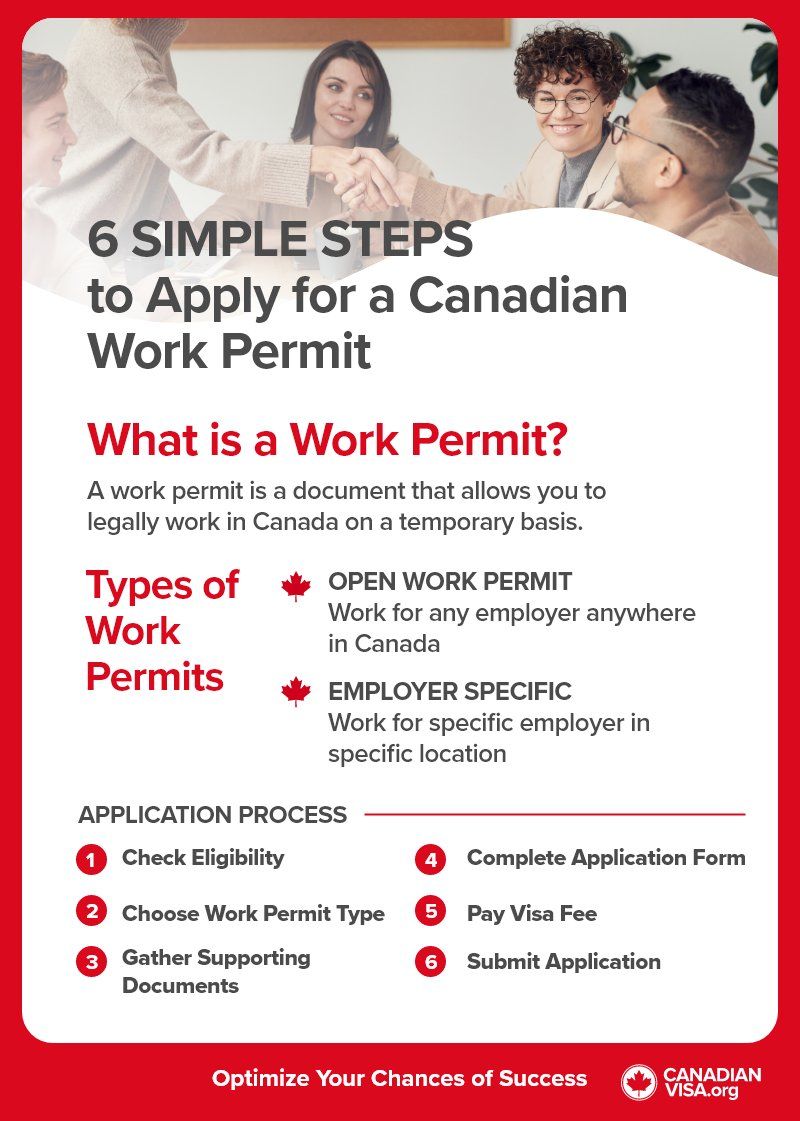
Due to the global pandemic, applications for work permits have been shifted online as far as possible. In the years to come, this is a measure that will likely remain in place. You will, however, be required to give biometrics at a consulate or designated agency within your area unless you are already in Canada.
Different forms are required depending on where you will be working, what you will be doing, and where you are applying from. There are benefits to submitting your applications online; no courier fees, no mail delivery times, you can ensure your application is a hundred percent correct before submission, you can submit supporting documents quickly if they are required and you are able to check the status of your application regularly.
You will be applying either for a Canadian work permit that requires a Labour Market Impact Assessment (LMIA) or one that is LMIA exempt. Work permits that are exempt from the LMIA requirement include applicants with a provincial nomination, intra-company transferees, people applying for open work permits such as spouses, students, and temporary residents.
The following documents will then be required when applying for your work permit:
- Family Information Form
- Original Passport, with at least 6 months validity remaining
- LMIA provided by the employer or your offer of employment from an LMIA exempt company with evidence of the exemption (neither required when applying for an open work permit)
- Police Clearance certificate to show you have not been convicted of a crime. It May not be older than 6 months. If you lived in a country for 6 months or longer within the past 10 years, you will require a police certificate from that country too.
Once your application has been submitted and reaches the stage where biometrics are required, you will be sent a notification that will tell you where and when you can provide these. There is a fee to process your application and a fee for biometrics, so be prepared for these. If you have traveled to Canada in the last 10 years and provided biometrics, you won’t be required to do so again.
Submitting your application completed properly is very important, if there are any mistakes or missing details, it will be returned unprocessed. You may also need to go for an interview with an immigration officer in your country and provide a medical exam, but these aren’t typically required.
If you are successfully approved, you will be sent a letter that confirms you are allowed to work in Canada and the conditions of your permit. This letter is not your work permit. Your work permit will be issued to you when you arrive in Canada by customs officials. This document will then fully outline the type of work you can do, the employer you will be working for, where you will be working and how long you can legally work in Canada.
We look forward to seeing you in Canada, we know you will add valuable input to the economy.
8. Indemand Temporary Work in Canada

Whether you want to gain valuable international working experience or get a foot in the door to apply for permanent residency, there are numerous temporary jobs you can secure in Canada. And as long as you can continue to secure ongoing in-demand temporary work while you are in Canada, you can continue to renew your work permit. Once you have some experience, you can apply for any number of programs that will grant you permanent residency in Canada, but enough about that, let’s consider some of the most popular in-demand temporary jobs you may find when searching the job boards, as well as their average salaries.
9. Asked & Answered: Facts About the TFWP

1. What are the most common temporary jobs in Canada for Foreigners?
Lower paying jobs are much easier to get as a foreigner. That doesn’t mean you won't still earn a good salary, around $30,000 per annum.
2. How long does it take to get a Canadian work permit?
If all your documents and your application are in order, you can be eligible for priority processing and have a Canadian work permit in as little as two weeks.
3. Where can I get a work permit?
Work permits are applied for online. You will require either a valid job offer, a qualification from a Canadian post-secondary school, or evidence that your spouse/family member is working in Canada and you are a dependent.
4. How long is a Canada work visa valid for?
It depends on your job offer and/or the work visa type, but typically 24 months.
5. Can my family come to Canada on my work visa?
Yes. All dependents including common-law partners, children, and parents may accompany you to Canada as long as you meet the financial requirements.

Applying for a Canadian work permit can be time-consuming and difficult to wrap your head around. With strict deadlines, procedures, and requirements, it can be easy to make a mistake that could cost you your chance to immigrate to Canada . But with the guidance and assistance of one of our knowledgeable Regulated Canadian Immigration Consultants (RCIC’s). the process will be stress-free.
When you choose to use our expert and government trusted service you will get:
- An in-depth eligibility assessment
- Guidance on which of 100+ immigration programs and visas to choose from;
- Access to our Visa Profile builder to submit documents and track your application status;
- An immigration plan tailored to your individual needs;
- A review and submission of all application forms and documentation; as well as
- Support through every step of the application process.
All you have to do is fill out our application form to receive your eligibility assessment and let us take care of the rest. It’s just that simple! Your Canadian journey starts here.
Be sure to follow us on Facebook, Twitter, LinkedIn, and Instagram to stay up to date on Canadian immigration and visa news.
SHARE THIS ARTICLE
Recent posts
Discover the top science jobs in canada.
Want to work in the Canadian Science sector? Then, get ready to discover the top science jobs in Canada.
Change of Scenery: Top Jobs in Rural and Northern Canada
Looking for a different setting to take your career to new heights in? Then check out the top jobs in rural and Northern Canada.
Work in The Beauty Industry in Canada
Let’s uncover the rewarding possibilities of employment in Canada's bustling beauty sector, ranging from esthetics and hairstyling to makeup artistry
How to Immigrate to Canada as a Lawyer
Discover our guide on navigating the immigration process to Canada as a lawyer, ensuring a smooth transition and successful integration into the Canad
Get your free e-book today!
Want to learn more about Canada? Subscribe to our newsletter and get an e-book on Canadian immigration filled with mesmerizing sights of Canada!
CanadianVisa.org is a private recognized immigration agent and is not affiliated with the Canadian Government. Privacy policy
Back To Top

Converting a Visitor Visa to a Work Visa in Canada: A Comprehensive Guide
- July 4, 2023
- CanadianVisa Admin
Canada, known for its stunning landscapes, vibrant cities, and welcoming communities, attracts millions of visitors from around the world each year. Many visitors find themselves falling in love with the country and considering the possibility of staying longer for work opportunities. This raises an important question: Is it possible to convert a visitor visa to a work visa in Canada? Let’s delve into the details and explore the options for those seeking to extend their stay in the Great White North.
Converting a visitor visa to a work visa is generally not feasible while you are physically present in Canada. If you enter Canada on a tourist visa or a visitor visa, you are explicitly stating that your visit is temporary and you have no intention of engaging in any employment during your stay. Therefore, converting your visitor visa to a work visa from within Canada is not the recommended route.
To work legally in Canada, you must apply for a work permit. There are various work permit categories, each with specific eligibility requirements. To enhance your chances of securing a work permit, it is advisable to seek employment from a Canadian employer who is willing to sponsor you. Canadian employers often require a positive Labour Market Impact Assessment (LMIA) from Employment and Social Development Canada (ESDC) to demonstrate that hiring a foreign worker will not negatively affect the Canadian job market. Having a valid job offer backed by an LMIA can significantly expedite the work permit application process.
The first step to obtaining a work permit is to apply from your home country or country of residence. This ensures that you follow the correct immigration procedures and provide all necessary documentation to the Canadian authorities. CanadianVisa.com is an invaluable resource for individuals seeking assistance with their work permit applications. The portal offers a wealth of information on various work permit options, LMIA requirements, and tips for a successful application.

The CanadianVisa.com platform can help streamline your work permit journey. By visiting the portal, you can access expert advice and personalized guidance on navigating the complex Canadian immigration system. Moreover, CanadianVisa.com provides regular updates on changes in visa regulations and application processes, ensuring that you remain well-informed throughout your visa application journey.
One of the most sought-after work permit categories is the Post-Graduation Work Permit (PGWP). International students who have completed a qualifying program of study at a Designated Learning Institution (DLI) in Canada may be eligible for the PGWP. With a PGWP, graduates can gain valuable Canadian work experience, which can be instrumental in qualifying for permanent residency in the future.
The Canadian Experience Class (CEC) is another favorable work permit route. It caters to individuals who have obtained at least one year of skilled work experience in Canada. The CEC pathway is particularly advantageous as it prioritizes candidates who have already integrated into Canadian society and demonstrated their ability to contribute to the Canadian economy.
While converting a visitor visa to a work visa from within Canada is not feasible, CanadianVisa.com empowers you to explore alternative pathways to achieve your dream of working in Canada. The portal provides in-depth information on the Express Entry system, which is a point-based immigration system for skilled workers. By utilizing the comprehensive resources available on CanadianVisa.com, you can learn how to create a competitive Express Entry profile and increase your chances of receiving an Invitation to Apply (ITA) for permanent residency.
In conclusion, converting a visitor visa to a work visa in Canada while physically present in the country is not possible. However, with the right information and proper guidance from CanadianVisa.com, you can explore various work permit options and work towards securing your dream job in Canada. Utilizing the portal’s resources and staying updated on the latest immigration developments will significantly improve your chances of success. Remember, preparation is key, and CanadianVisa.com is your trusted partner in navigating the Canadian immigration landscape. Good luck on your journey towards a fulfilling career in the beautiful nation of Canada!
How Much Does a Canadian Visa Application Cost?
Introduction Canada, known for its stunning landscapes, vibrant cities, and diverse culture, has been a…

Express Entry: The Fast Track to Canadian Permanent Residency
Dreaming of a permanent residency in the vibrant tapestry of Canadian life? Look no further…
Extending Your Stay on a Canadian Visa: A Guide to CanadianVisa.com
Introduction: Canada, with its breathtaking landscapes, diverse culture, and welcoming society, is a popular destination…
- previous post: Extending Your Stay on a Canadian Visa: A Guide to CanadianVisa.com
- next post: Navigating Your Path to Canada: Documents Required for a Canadian Work Permit Application
KPMG Personalization

- Canada – Changes to Temporary Foreign Worker Program
GMS Flash Alert 2024-091
- Share Share close
- Download Canada – Changes to Temporary Foreign Worker Program pdf Opens in a new window
- 1000 Save this article to my library
- Go to bottom of page
- Home ›
- Insights ›
Jump to: More Details | Canada’s ‘Soft Cap’ on Temporary Residents
On March 21, 2024, Immigration, Refugees and Citizenship Canada (IRCC) announced changes to its Temporary Foreign Worker Program (TFWP), including modifications to the validity period of Labour Market Impact Assessments and to the cap for low-wage temporary foreign workers employed by employers in certain sectors. 1
The new measures were announced as Canada reviews its immigration policies. Due to rising challenges in housing, health-care, and other labour market conditions, Canada’s government is adjusting the TFWP to help ensure the program continues to be used for positions where there are no available Canadians or permanent residents to fill the roles.
WHY THIS MATTERS
The shorter duration for foreign nationals to apply for a work permit once they receive a positive Labour Market Impact Assessment (LMIA) and the reduction in the cap for low-wage temporary foreign workers employed in certain sectors may mean less flexibility or convenience in terms of hiring foreign nationals.
More Details
The TFWP is designed to issue work permits to foreign nationals who can help fill labour shortages in Canada. Employers seeking to hire foreign nationals through the TFWP must support work permit applications with a LMIA, which demonstrates that there are no qualified Canadians or permanent residents to fill the role.
During COVID-19, Canada released a series of temporary measures to help address labour market needs, including temporarily increasing the validity period of an LMIA to 12 months.
What’s Changing?
Effective May 1, 2024, LMIAs will be valid for a period of six months, resulting in a shorter duration for foreign nationals to apply for a work permit.
Additionally, the cap for low-wage temporary foreign workers employed by employers in certain sectors will decrease from 30 percent to 20 percent.
Canada’s ‘Soft Cap’ on Temporary Residents
Immigration Minister Marc Miller also announced that Canada is expected to reduce the population of temporary residents in Canada over the next three years. 2 Specifically, Canada is planning to reduce the temporary resident population in Canada from 6.2 percent to 5 percent by 2027 to help manage the recent increase in temporary residents in Canada. In January, IRCC announced that it was setting an intake cap on international student applications for a period of two years (see GMS Flash Alert 2024-036 , February 6, 2024).
KPMG INSIGHTS
Government’s Plans and Goals
The Canadian government is expected to include temporary residents in its annual immigration levels plan, which is expected to be released in the fall. IRCC will be conducting a review of the government’s temporary worker permit programs, with the goal of better aligning with current labour market conditions.
As Canada continues to review current immigration policies, KPMG will continue to monitor and report on important updates.
Employers’ Considerations
As Canada reviews its immigration policies, employers may need to proactively review and adjust their foreign workforce strategies.
Employers will need to assess and manage their labour needs as they may have less flexibility in hiring foreign nationals instead of Canadian citizens or permanent residents.
Employers in sectors with low-wage positions may need to fill more vacancies with Canadian citizens, permanent residents, or other residents.
* * * *
Immigration legislation and practices continue to change frequently. Individuals who have questions or concerns about the new measures are encouraged to contact their usual immigration counsel or KPMG Law LLP (see the Contacts section) for further guidance.
1 Employment and Social Development Canada, " Government of Canada to adjust temporary measures under the Temporary Foreign Worker Program Workforce Solutions Road Map " (March 21, 2024).
2 Immigration, Refugees and Citizenship Canada, " Speaking notes for the Honourable Marc Miller, Minister of Immigration, Refugees and Citizenship: Announcement related to Temporary Residents
Please note the KPMG International member firm in the United States does not provide immigration or labour law services. However, KPMG Law LLP in Canada can assist clients with U.S. immigration matters.
The information contained in this newsletter was submitted by the KPMG International member firm in Canada.
Connect with us
- Find office locations kpmg.findOfficeLocations
- Email us kpmg.emailUs
- Social media @ KPMG kpmg.socialMedia
- Request for proposal
Stay up to date with what matters to you
Gain access to personalized content based on your interests by signing up today
Browse articles, set up your interests , or View your library .
You've been a member since
- GMS FLASH ALERT - CANADA
- GMS FLASH ALERT - IMMIGRATION
- GMS FLASH ALERT - VIEW ALL
GMS Flash Alert is a Global Mobility Services publication of the KPMG LLP Washington National Tax practice. The KPMG name and logo are trademarks used under license by the independent member firms of the KPMG global organization. KPMG International Limited is a private English company limited by guarantee and does not provide services to clients. No member firm has any authority to obligate or bind KPMG International or any other member firm vis-à-vis third parties, nor does KPMG International have any such authority to obligate or bind any member firm. The information contained herein is of a general nature and is not intended to address the circumstances of any particular individual or entity. Although we endeavor to provide accurate and timely information, there can be no guarantee that such information is accurate as of the date it is received or that it will continue to be accurate in the future. No one should act on such information without appropriate professional advice after a thorough examination of the particular situation.
We respectfully acknowledge that KPMG offices across Turtle Island (North America) are located on the traditional, treaty, and unceded territories of First Nations, Inuit and Métis peoples.
© 2024 KPMG LLP, an Ontario limited liability partnership and a member firm of the KPMG global organization of independent member firms affiliated with KPMG International Limited, a private English company limited by guarantee. All rights reserved.
For more detail about the structure of the KPMG global organization please visit https://kpmg.com/governance .
Main navigation
- New Students
- Immigration
- Work & Permits
- Health Insurance (IHI)
ISS is available virtually and in-person Mondays-Fridays during business hours.
- Study Permit FAQs
- IHI Updates
Work in Canada - FAQs
Immigration Essentials for International Students in Graduate Programs at McGill
NEW: Study With A Work Permit
On and off campus work, post-graduation work permit, co-op work permit, 1. i am in canada and hold a valid work permit, or have recently applied to extend my work permit. can i study at mcgill without a valid caq or study permit.
It depends. Effective June 27, 2023, IRCC implemented a temporary public policy measure that allows eligible workers to study in Canada without a study permit. Immigration Quebec is also exempting these eligible workers from the requirement to hold a CAQ.
Who is eligible to benefit from this temporary public policy measure? To be eligible to study at McGill without a CAQ or study permit under this temporary public policy, you must be authorized to work in Canada with either of the following:
- You hold a valid work permit and the application associated with that permit was received by IRCC on or before June 7, 2023; or
- You applied to extend your work permit and received a letter from IRCC with an issue date on or before June 7, 2023 authorizing you to work in Canada while your work permit extension application is being processed.
Who is not eligible to benefit from this temporary public policy measure? Anyone who applied for their work permit (initial or extension) after June 7, 2023, is not eligible to benefit from this temporary public policy measure.
THINGS TO CONSIDER:
- If you elect to study at McGill without a study permit under this temporary public policy, you will not be eligible for the Post-Graduation Work Permit . You must have a study permit and study full-time to be eligible for the PGWP.
- If you elect to study at McGill without a CAQ and study permit under this temporary public policy, you are not required to be enrolled on a full-time basis. However, please note that departmental policies may still require full-time enrollment as a condition of your program.
- If you’re a worker who is studying full time and considering applying for Permanent Residency, your work experience will not count toward your eligibility for the Canada Experience Class or for gaining Canadian work experience points under the Express Entry’s Comprehensive Ranking System (CRS).
- If you’re a worker who is studying full time and considering applying for Permanent Residency, your full-time studies will count toward the Federal Skilled Worker Program adaptability and Express Entry CRS points, but only if you study at a designated learning institution (DLI) that offers PGWP-eligible programs, which McGill is and does.
NOTE: This public policy is in effect until June 27, 2026 and may be revoked at any time, without prior notice. For more details, please visit the Immigration Canada and Immigration Quebec websites.
2. How long can I study at McGill without a CAQ or study permit under this temporary public policy measure?
- If you meet the eligibility requirements of this temporary policy, and you held a valid work permit on June 7, 2023 , you can study without a CAQ and study permit until the earliest of the two following dates:
- the expiry date on your work permit; OR
- June 27, 2026 (the date IRCC’s temporary public policy expires)
- If you meet the eligibility requirements of this temporary policy, and you had a work permit extension application in progress on June 7, 2023 , you can study without a CAQ and study permit until the earliest of the three following dates:
- the expiry date on your approved work permit extension;
- the date your work permit extension application is refused (if applicable); OR
- June 27, 2026 (the date this temporary public policy expires)
3. My work permit will expire before I complete my program. Do I need a CAQ and study permit?
You will need to apply for a CAQ and apply for a study permit if:
- Your courses, degree or program length will extend beyond the validity of your current work permit (to cover the period you will be studying after its expiry); or
- Your work permit extension application is refused.
1. How many hours can I work as an international student during an academic term?
Full-time students * are authorized to work in Canada full-time on-campus and part-time off-campus (up to a maximum of 20hrs per week) during an academic term. Exceptionally, students who are part-time in their final term but have been full-time in every previous term are authorized to work full-time on-campus and part-time off-campus in their final academic term before graduating.
* For undergraduate and non-thesis graduate students, full-time means you are enrolled for a minimum of 12 credits per academic term . PhD and Masters thesis students are considered full-time in every semester of their program, including the Summer term, regardless of the number of credits they are taking.
NOTE: If you are outside of Canada , you are not restricted to the limits defined by Canadian immigration regulations regarding on-campus and off-campus work. You must, however, respect the allowable hours of work in the country where you are currently residing.
***********************************************************
Temporary Changes to Off-Campus Work Regulations
IRCC has temporarily removed the limit on off-campus work hours for certain eligible international students. Students who meet the requirements may work more than 20 hours a week off-campus during an academic term. For more information and to verify if you are eligible, please see Question #2.
2. How many hours can I work off-campus under Immigration Canada's new temporary policy measure?
IRCC has temporarily removed the limit on off-campus work hours for certain eligible international students. Students who meet the requirements may work more than 20 hours a week off-campus during an academic term.
The following students may work full-time off-campus from November 15th, 2022 to April 30th, 2024 :
Students who currently hold a valid study permit and had applied for this study permit on or before October 7, 2022;
Students who applied to extend their study permit from within Canada on or before October 7th, 2022 and are currently on maintained status.
The following students may work full-time off-campus from January 1st, 2024 to April 30th, 2024 :
Students who currently hold a valid study permit and had applied for this study permit between October 8, 2022 and December 7th, 2023 (inclusive);
Students who held a study permit which they had applied for on or after October 8, 2022 and who are currently on maintained status after having submitted a study permit extension application between October 8, 2022 and December 7th, 2023 (inclusive).
IMPORTANT: In order for students to benefit from these temporary measures, they must also meet all the requirements to work off-campus, including maintaining full-time student status. Students can be part-time in their final semester and work off-campus if they were full-time in every other regular academic term.
For more information on this policy, please refer to the IRCC Off-campus Work webpage .
3. I have completed my program in the Winter term, but my study permit expires at the end of summer. Can I work in the summer?
No. If you were always enrolled full-time (except for your final term), you may work an unlimited amount of hours on-campus and/or a maximum of 20h/week off-campus until you receive proof of program completion (i.e., the proof of graduation letter available on Minerva after Senate meets to grant your degree OR the special letter of program completion from Service Point before Senate meets). Once you receive proof of program completion, you are no longer authorized to work on the basis of your study permit* .
* Students who meet all the PGWP eligibility requirements may be eligible to begin to work after submitting an application for the PGWP and for the entire time their PGWP application is pending.
4. I'm about to complete my program. Can I work after the end of my final semester of studies?
It depends. If you were enrolled full-time in every term except your last term, and have always respected the allowable hours of work during your studies, you can continue to work full-time on campus and/or part-time off-campus (maximum of 20 hours per week) after the end of your final semester until the first date you receive written confirmation from McGill that you have complete your program. Once you receive written proof of program completion, you must then stop all work activity – whether or not this work is paid or unpaid. You can start working full-time on campus and/or off-campus:
- After you have obtained your PGWP; or
- As soon as you have submitted an online PGWP application as long as you meet certain conditions . These conditions include holding a valid study permit at the time of application, applying from inside Canada, having been full-time throughout your studies (with the exception of your final term of studies), and having respected the allowable hours of work during your studies.
5. I don't have a Social Insurance Number and Service Canada Offices are closed. How can I get one?
Service Canada is now processing SINs online. Please visit the Service Canada website to apply online.
6. Can I take less than 12 credits per term and study part-time?
Under the current conditions for CAQ holders , international students must make their studies their principal activity . This means that in order to respect your CAQ conditions, you must maintain full-time student status every term for the duration of your program, with the exception of your last term.
Under the current eligibility requirements to work on-campus and off-campus , international students must maintain full-time student status every term for the duration of their program, with the exception of their last term.
Under the current eligibility requirements for the post-graduation work permit (PGWP), international students must maintain full-time student status every term for the duration of their program, with the exception of their last term.
We, therefore, recommend that all international students maintain full-time student status for the duration of their program with the exception of their last term, so as not to compromise their ability to extend their CAQ, maintain authorization to work on and off-campus or their eligibility for the PGWP.
If you must be part-time due to extenuating circumstances such as health issues or a family emergency, please contact us so that we may best advise you. You may also wish to review our part-time studies information sheet .
7. Do I need a medical exam before starting my on-campus or off-campus job?
It depends.
If the job you plan on doing brings you into close contact with vulnerable people, you will need to undergo a medical exam by a panel physician - even if you are not prompted to do so when submitting your study permit application. Examples of such jobs include:
- clinical laboratory workers;
- patient attendants in nursing and geriatric homes;
- medical students admitted to Canada to attend university;
- medical electives and physicians on short-term locums;
- workers in primary or secondary school settings, or workers in child-care settings;
- workers who give in-home care to children, the elderly and the disabled;
- day nursery employees; and
- other similar-type jobs.
If you already have a Study Permit it is important to verify the conditions of your permit. If it does NOT have the condition that states that you are restricted from working in the industry where you will or intend to be employed (e.g., healthcare, primary or secondary education, daycares, senior homes, etc.), then you may use it to work in Canada (if meeting all other requirements to do so). If it DOES state this condition, then you will need to undergo a medical exam by a panel physician and apply for a new Study Permit (and pay all applicable fees) so that the condition is removed in order to work in your intended job.
You can find a list of panel physicians in your area on the Immigration Canada website.
1. I am a master's student completing a program that has an official program length of less than 2 years, how long will my post-graduation work permit (PGWP) be issued for?
Starting on February 15, 2024 , international students who are graduating from a master’s degree program that is less than 2 years in length may now be eligible for a 3-year post-graduation work permit (PGWP).
To be eligible for the PGWP , you must have completed a program that is at least 8 months in length and maintained continuous, full-time student status in every term except your final term, among other eligibility criteria.
For more information about the PGWP, visit our PGWP webpage and watch our recorded PGWP webinar . You can also visit IRCC’s PGWP webpage .
2. Is Winter 2024 your final term of studies? Are you hoping to work in Canada after the term has ended?
If you have maintained full-time status in every term of your program with the exception of your final term and you have always respected the limit of allowable work hours during your studies , you are authorized to continue to work until the first date that you receive official confirmation of program completion. You must then stop working . You can resume working only once you have submitted an application for the Post-Graduation Work Permit (PGWP) from inside Canada while holding a valid study permit (and you meet all the eligibility requirements ) OR once you have obtained your PGWP (if you do not meet all the eligibility requirements).
* Official confirmation of program completion can either be a Proof of Graduation Letter that you can generate yourself on Minerva the day after Senate meets on May 23, 2024 or a Post Graduate Work Permit Letter that you may be able to obtain from Service Point before Senate meets (if you meet certain conditions). Remember: It is the date one of the above letters is made available to you - NOT the date you print or download the letter - that is the day you must stop working. Please see our WORK FAQs and Post-Graduation Work Permit Cheat Sheet for more information on the PGWP and for details on how many hours you can work on and off-campus while you wait to receive proof of program completion.
***IMPORTANT***
If you are full-time and authorized to work in the Winter 2024 term but you have not been full-time in every other term of your program, you must stop working once the Winter 2024 term officially ends on April 30, 2024 .
3. When will my transript show degree granted?
The “Degree Granted” remark will appear on your transcript after the Senate Steering Committee has met to officially confer graduates with their degrees. Students who are approved for graduation can generate a Confirmation of Graduation letter in Minerva as proof of program completion the day after Senate has met to grant their degree.
- For students who complete their degree requirements in the Fall term , “Degree granted” will appear on their transcript after the Senate Steering Committee meets in February .
- For students who complete their degree requirements in the Winter term , “Degree granted” will appear on their transcript after the Senate Steering Committee meets in May .
- For students who complete their degree requirements in the Summer term , “Degree granted” will appear on their transcript after the Senate Steering Committee meets in October .
IMPORTANT: The exact date in February, May and October that the Senate Steering Committee meets differs from one academic year to the next. Please visit the Convocation & Graduation FAQ page under the tab, Transcript & Diploma - " When will my transcript show degree granted?" for more specific information.
4. When will I receive official confirmation of program completion?
Official confirmation of program completion occurs on the business day following the day Senate Steering Committee meets to officially grant your degree OR the date you are issued a Post-Graduation Work Permit letter from Service Point - whichever comes first .
- Once Senate has met, you can then download a Proof of Graduation Letter from your Minerva account ( Minerva: Student Menu > Student Records > Letters-Proof of Enrolment > Proof of Enrolment/Graduation) .
If you have requested a Post-Graduation Work Permit Letter from Service Point, it will be emailed directly to you.
5. May I travel and return to Canada while PGWP is processing?
You can leave Canada and return, as long as your visa or Electronic Travel Authorization (eTA) is still valid. Your study permit is not a visa and doesn't allow you to travel back to Canada.
If your visa or eTA is expired, you have to get a new one before you return to Canada.
When you return to Canada:
- You may be authorized to enter as a student if your study permit is still valid; OR
- If your PGWP application has been approved while you were away, you may be authorized to enter as a worker and can begin working in Canada; OR
- If your PGWP application is still processing, you may be authorized to enter as a visitor, and you can work without a work permit until a decision has been made on your application if you meet the conditions to work while your PGWP application is processing. NOTE: The officer may ask you for proof that you applied for a post-graduation work permit, such as a copy of your application or the fee payment receipt.
If the officer believes there is reason to refuse your re-entry, you won’t be authorized to enter Canada.
6. I have submitted my final thesis and my department has approved me for graduation. Do I need to wait for Senate to meet to apply for the PGWP?
Once you have submitted your final thesis and your department has approved you for graduation, you can request a Post-Graduation Work Permit Letter from Service Point before Senate meets to grant you your degree. You can then use that letter to apply for the PGWP.
7. I want to apply for the PGWP. However, my study permit will expire after I complete my program but before Senate meets to grant degrees. What should I do?
If you have completed all your program requirements and your department has approved you for graduation, you can request a Post-Graduation Work Permit Letter from Service Point before Senate meets to grant your degree. You can then use this letter to apply for the PGWP before your study permit expires.
However, if you are uncertain as to if you’ll be able to obtain the Post-Graduation Work Permit Letter before your study permit expires, you may wish to proceed with one of the following options:
- OPTION 1 : Apply to extend your CAQ as soon as possible and then apply to extend your study permit before your study permit expires; OR
- OPTION 2 : Apply to extend your stay as a visitor before your study permit expires. NOTE: If you change your status to a visitor, you must apply for your PGWP from outside Canada; OR
- OPTION 3 : Leave Canada before your study permit expires and apply for the PGWP from outside Canada.
INSTRUCTIONS FOR OPTION 1: Apply to extend your CAQ and apply to extend your study permit before it expires.
- In your CAQ application , in addition to the required documents, include a cover letter that explains that the current term is your final term and that you are renewing your CAQ for an additional 90 days to be able to apply for the PGWP. You will need to submit proof of enrolment for the current term, and if possible, a letter from your Department that confirms that the current term is your final term.
- Once you receive your CAQ approval, you must apply to extend your study permit before your current study permit expires. In your study permit extension application, include a cover letter that explains that the current term is your final term and that you are requesting an additional 90 days to be able to apply for the PGWP.
- See our CAQ Renewal Guide and Study Permit Renewal Guide for more information and instructions on submitting a CAQ renewal and study permit extension application.
NOTE: If you apply to extend your study permit from inside Canada before it expires, you will be on maintained status once your study permit expires and can thus remain in Canada until a decision is made on your application.
- If you obtain proof of program completion, have received your new study permit in the meantime, and then apply for the PGWP from inside Canada while holding a valid study permit and within your deadline, you may start to work full-time while waiting for your PGWP to be issued, if eligible .
- IMPORTANT: You cannot apply for the PGWP from inside Canada while on maintained status.
INSTRUCTIONS FOR OPTION 2: Apply to extend your stay as a visitor before your study permit expires
- See the Immigration Canada website for instructions on how to submit an application to extend your stay in Canada as a visitor (visitor record) while you wait to receive official notification of program completion.
- If you change your status to a visitor before applying for the PGWP, you cannot apply for the PGWP from inside Canada. You must apply for the PGWP from outside Canada.
INSTRUCTIONS FOR OPTION 3: Leave Canada before your study permit expires and apply for your PGWP from outside of Canada
- If you choose this option, you do not have to apply to extend your study permit or change your status to visitor
- You can apply for the PGWP once you have obtained proof of program completion
- Once your application is approved, you will receive a TRV or eTA (if applicable) and a work permit approval letter. You will need to present the letter to the border agent when returning to Canada to have your Post Graduation Work Permit issued.
8. Some of my studies at McGill were or will have been completed online from outside Canada due to COVID-19. Am I still be eligible for the PGWP?
YES. You can complete up to 100% of your studies online from outside Canada and remain eligible for the Post-Graduation Work Permit (PGWP).
Normally, time spent studying outside of Canada is deducted from the length of the PGWP and only online courses completed from within Canada (less than 50% of your program) can count towards the total length of the program when determining the length of the PGWP.
However, as a response to the COVID-19 pandemic and ensuing travel restrictions, IRCC announced a series of new facilitative measures that allow students who were forced to begin their program, continue their studies, or complete their program remotely from outside Canada to maintain their post-graduation work permit eligibility.
As per IRCC’s most recent update to their PGWP facilitative measures:
All of the time you spent studying online from outside Canada between spring 2020 and August 31, 2022 , counts toward the length of a PGWP. This applies even if you’re completing 2 study programs.
If you’re completing 2 study programs, you can finish 100% of your studies online if the programs were ongoing or started between March 2020 and summer 2022, and
- both study programs are with an eligible DLI and are completed within 2 years, and
- each program meets all PGWP eligibility requirements and is at least 8 months long
The following time won’t count toward the length of a PGWP:
- time spent studying outside Canada after August 31, 2022
- time spent studying before you applied for a study permit
NOTE: Only the time you spent studying outside of Canada after IRCC received your study permit application counts towards the length of your PGWP and your study permit application must be also be approved.
9. I applied for PGWP and wasn't always full-time (excluding final semester) but got an IRCC letter stating I can work while my PGWP is pending.
No. In order to work while your PGWP application is pending, you must meet certain conditions . If you do not meet all of these conditions, then you cannot work while your application is pending even if you receive the IRCC Acknowledgement of Receipt letter stating that you can work.
10. The letter from IRCC states I can work until X date while my PGWP application is pending. After X, should I stop working and wait for my PGWP?
In order to work while your PGWP application is pending, you must meet certain conditions . If you meet all these conditions, you can work while your PGWP application is pending. Concerning the date included in the Acknowledgement of Receipt letter, IRCC has confirmed that:
Officers should understand that the validity date of the letter in no way overrides the authority of paragraph R186(w), which allows foreign nationals who meet the requirements to continue working until a final decision is made on their work permit application
In other words, if you meet all the PGWP eligibility requirements , you may continue to work for the entire time your PGWP application is pending, regardless of the date indicated on your Acknowledgement of Receipt letter. For more information, please see IRCC’s website .
11. I began/completed a program at McGill, online, from inside Canada in Summer/Fall 2020, Winter/Fall 2021, or Winter 2022. Am I still eligible for PGWP?
Yes. Normally, if more than 50% of a student’s program of study’s total courses are completed by distance learning (online) from inside Canada, the program may be considered a distance-learning or online program, and the applicant would be ineligible for a post-graduation work permit.
However, as a response to the COVID-19 pandemic and ensuing public health restrictions, IRCC has announced a series of new facilitative measures that allow students who were forced to begin their program, continue their studies, or complete their program online from inside Canada to maintain their post-graduation work permit eligibility even if they complete more than 50% of their program online.
As stated on IRCC’s website, these facilitative measures for students studying online from Canada include the following:
If you’re inside Canada
You’re still eligible for the PGWP if either of the following situations apply to you:
- It’s highly recommended that you attend in-class options when offered.
- You had to put your studies on hold, or study part-time, during the winter, spring or summer 2020 semesters because of COVID-19.
NOTE: As of the Fall 2020 semester, you must be studying full-time to be eligible.
12. I will be applying for my Post-Graduation Work Permit (PGWP) while on maintained status. Can I work in Canada while my application is processing?
No. If you are currently on maintained status (i.e., you are awaiting a decision on your study permit extension application), and wish to apply for your PGWP before your new permit is issued, you can apply from inside Canada but cannot work while your application is pending.
This is because In order to work while your PGWP application is pending, you must meet certain conditions , including the requirement to hold a valid study permit at the time you submit your application. Because an applicant on maintained status no longer holds a valid study permit, applicants in this situation cannot work until they have obtained their PGWP.
13. I am applying for my PGWP and am required to submit my official transcript. How can I ensure my transcript will be considered "official"?
Now that Service Point has resumed the issuance of official printed transcripts, you have two options when applying for your PGWP online. You can either submit a scanned copy of your official printed transcripts (you can request your official printed transcripts via Service Point's dedicated webform ) OR a copy of your official eTranscript ( order an electronic official transcript ). If you choose to submit a copy of your official eTranscript instead of a scanned copy of your printed transcript, we recommend that you include cover letter explaining that you are providing a copy of the electronic version of the official transcript instead of a scanned copy of the printed official transcript. NOTE: it is possible that the "COPY" watermark will appear on the eTranscript when you combine the eTranscript with other documents into one PDF, when you save the eTranscript to your computer, and/or when the immigration agent opens the file. You should mention this possibility in your cover letter and also ensure that you view/save your eTranscript according to the instructions provided by the National Student Clearinghouse when you order your eTranscript. You should create one pdf document (that includes your Cover Letter and eTranscript) and upload the document in the “Transcript” section of your Document Checklist.
IMPORTANT: If you will be applying for your PGWP at a Port of Entry (i.e., land border, or airport for those applicants who are visa-exempt ), and are able to obtain your official printed transcript from Service Point, you should bring your printed transcript (not your eTranscript) to present to the border agent. You can request your official printed transcript via Service Point's dedicated webform . If printed transcripts are not available, you can bring your eTranscript instead.
14. I'm about to complete my program. Can I work after the end of my final semester of studies?
If you were enrolled full-time in every term except your last term, and have always respected the allowable hours of work during your studies, you can continue to work full-time on campus and/or part-time off-campus (maximum of 20 hours per week) after the end of your final semester until the first date you receive written confirmation from McGill that you have complete your program (either the proof of program completion letter from Service Point or the proof of graduation letter after Senate meets). Once you receive written proof of program completion, you must then stop all work activity – whether or not this work is paid or unpaid. You can start working full-time on campus and/or off-campus:
- As soon as you have submitted an online PGWP application and as long as you meet certain conditions . These conditions include holding a valid study permit at the time of application, applying from inside Canada , having been full-time throughout your studies (with the exception of your final term of studies), and having respected the allowable hours of work during your studies.
15. If I am part-time in any given term(s) during my studies, do I remain eligible for the PGWP?
If you must be or were part-time due to extenuating circumstances such as health issues or a family emergency, please contact us so that we may best advise you on how to submit your application.
You may also wish to review our part-time studies information sheet .
16. If my current TRV (Entry Visa) says "Student" and is still valid, do I need a new TRV if I am changing my status to "Worker"?
Your TRV is valid until its expiry regardless of whether it was issued to you as a student or as a worker. You can leave and re-enter Canada with a TRV marked “S-1 Student” even if you have changed your status to a worker.
17. I have a valid PGWP or will be applying soon. What level of job must I have for my spouse to be eligible to apply for or extend their Open Work Permit?
You can now work in a job at any skill level in order for your spouse to be eligible for an OWP.
As of January 30, 2023, IRCC has temporarily removed all restrictions on the level of job a foreign worker must have in order for their spouse to be eligible to apply for or extend their Open Work Permit.
For more information, see Changes to open work permit eligibility for family members of foreign workers .
18. Do I need a medical exam when applying for my Post-Graduation Work Permit Job?
If the job you plan on doing brings you into close contact with vulnerable people, you will need to undergo a medical exam by a panel physician - even if you are not prompted to do so when submitting your PGWP application. Examples of such jobs include:
If you already have a Post-Graduation Work Permit it is important to verify the conditions of your permit. If it does NOT have the condition that states that you are restricted from working in the industry where you will or intend to be employed (e.g., healthcare, primary or secondary education, daycares, senior homes, etc.), then you may use it to work in Canada (if meeting all other requirements to do so). If it DOES state this condition, then you will need to undergo a medical exam by a panel physician and apply to change the conditions on your work permit (and pay all applicable fees) so that the condition is removed in order to work in your intended job.
1. Can I complete my program's mandatory co-op/internship from outside of Canada?
If you will be completing a mandatory internship outside of Canada, you do not need a Coop Work Permit to do so. However, please check with your program coordinator prior to accepting any offers to ensure your internship is approved for credit.
2. Do I need a medical exam before starting my coop internship?
If the job or work placement you will be doing for your internship brings you into close contact with vulnerable people, you will need to undergo a medical exam by a panel physician when applying for your Co-op Work Permit - even if you are not prompted to do so when submitting your study permit and coop work permit application . Students with work placements or clinicals in the Faculty of Medicine, Nursing and Education must undergo a medical exam. Other examples of such jobs include:
- workers in health-care settings;
- other similar-type jobs.
If you already have a Co-op Work Permit, it is important to verify the conditions of your permit. If it does NOT have the condition that states that you are restricted from working in the industry where you will be employed (e.g., healthcare, primary or secondary education, daycares, senior homes, etc.), then you may use it to complete your mandatory internship. If it DOES state this condition, then you will need to undergo a medical exam by a panel physician and apply for a new Coop Work Permit so that the condition is removed in order to be able to begin your mandatory internship. There is no fee to apply for a new Coop Work Permit.
Department and University Information
Office of international student services.
- Campus Life & Engagement
- Career Planning Service
- Scholarships and Student Aid
- First People's House
- Office of Religious and Spiritual Life
- Student Accessibility And Achievement
- Student Wellness Hub
- Student Services
- ISS on Facebook
- ISS on Instagram
Subscribe Contact us
Best Workplaces™ in Canada 2024
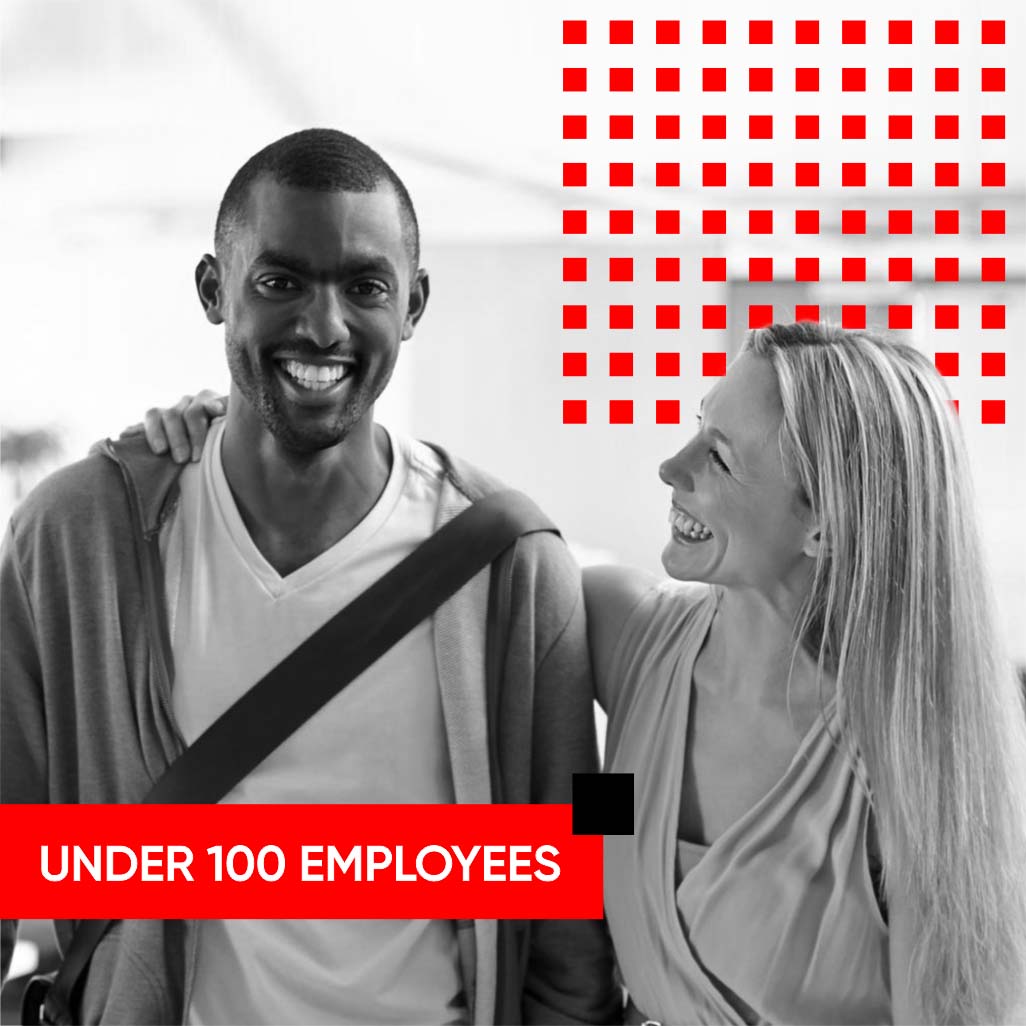
View list here
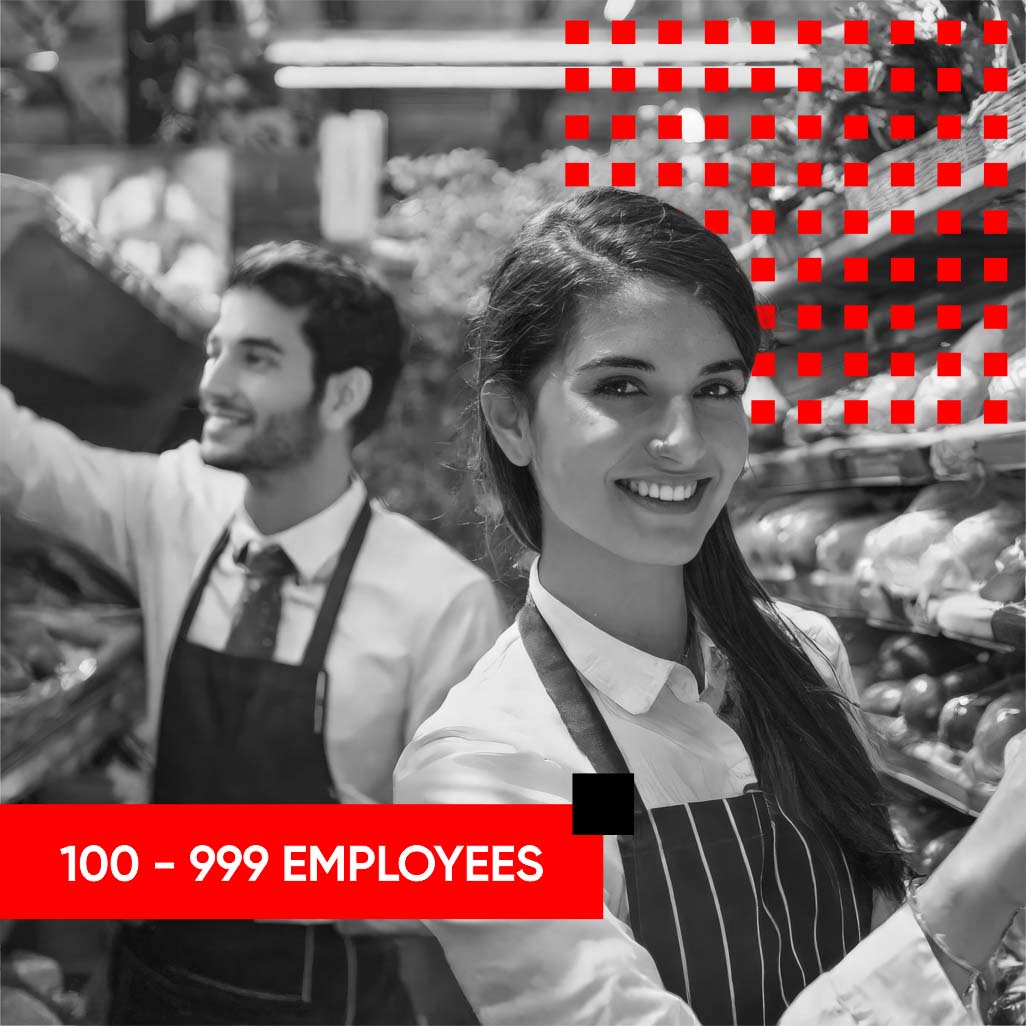
11 Benefits of Getting Great Place To Work® Certified™

5 Workplace Culture Trends for Companies to Watch in 2024

Fostering Acceptance of AI: The Crucial Role of Transparency and Training in the Modern Workplace

Learn how to create an award-winning company culture
Get our latest research, advice and ideas to help you become an employer of choice.
Insights™ - Webinar Series
Join our company culture experts as they share research and insights on how to create, sustain, and get recognized for your great workplace culture
Register Today

18 million employees. 18,000 companies. 170 countries. 30+ years.
Surveyed annually., get certified. become great..
- Certification makes you eligible to be recognized as Best Workplace™.
- Certification helps you acquire & retain top talent.

IMAGES
VIDEO
COMMENTS
Ottawa, February 28, 2023—Foreign nationals who are in Canada as visitors and who receive a valid job offer will continue to be able to apply for and receive a work permit without having to leave the country.Visitors applying under this public policy who held a work permit within the last 12 months will also continue to be able to request interim work authorization to begin working for their ...
Step 1: Make sure you have what you need. To apply online, you'll need: a scanner or camera to create electronic copies of your documents, and. a valid credit or debit card. If you have problems applying online. You can submit a paper application if either. you can't apply online because of a disability.
Revised August 25 Change intended to benefit employers who are still facing difficulties finding workers. August 24, 2020—Ottawa—Visitors who are currently in Canada and have a valid job offer will be able to apply for an employer-specific work permit and, if approved, receive the permit without having to leave the country, thanks to a new public policy announced today by the Honourable ...
Do you want to work in Canada as a visitor? Find out if you are eligible to apply for a work permit without leaving the country, and what are the requirements and steps to do so. Learn more about the new temporary public policy and the Certificat de sélection du Québec (CSQ) holders.
Visitor Visa Fees and Requirements. The application fee for a visitor visa is $100 CAD (~ 5,200 INR), while the biometrics charge is $85 CAD (~ 4,400 INR). A cost of $100 CAD per person is required to extend your visitor visa. You must pay a visa cost of $200 CAD (About 11065.45 INR) to regain your tourist status.
Work permits and applications for temporary workers, business people, students and caregivers in the Live-In Caregiver Program. ... How to become a candidate in the International Experience Canada pools, how to apply for a work permit online, processing times and preparing for arrival. Open work permit for vulnerable foreign workers.
You can only apply for a work permit from inside Canada if. you have a valid study or work permit; your spouse, common-law partner or parents have a valid study or work permit; you're eligible for a post-graduation work permit and your study permit is still valid; you have a temporary resident permit that is valid for six months or more;
Published: August 24, 2020. 196230 shares. International visitors who are currently in Canada with a job offer can now apply for a work permit without having to leave the country. The new policy goes into effect immediately, according to an Immigration, Refugees and Citizenship Canada (IRCC) media release. It will benefit temporary residents ...
An open work permit lets you work for any employer in Canada, except for one that. is listed as ineligible on the list of employers who have failed to comply with the conditions, or; regularly offers striptease, erotic dance, escort services or erotic massages. You can only get an open work permit in specific situations.; Some jobs require a medical exam.
Canada announced that it is extending until February 28, 2022, a coronavirus-related measure allowing visitors to obtain work permits. Since August 24, 2020, temporary residents who are in Canada with valid visitor status have been able to apply for an employer-specific work permit from within Canada.. This is a temporary regulatory change as normally foreign workers who are in Canada on a ...
Employment agreements. If you have an employer-specific work permit, your employer must give you an employment agreement. You and your employer must sign the agreement, which should include. the details of your job. the conditions of your employment. the highest number of hours you will work in a week. how much you will be paid for your work.
Normally, visitors can't apply for work permits from inside Canada. Due to a temporary policy change, visitors can apply online for an employer-specific work permit.
Visitors in Canada can continue to apply for a work permit without needing to leave the country, provided they have a valid job offer. The measure also applies to people who held a work permit within the last 12 months and who are still in Canada on visitor status. This COVID-era temporary public policy was supposed to expire February 28, 2023.
Step 1: Apply for a Visitor Visa (TRV) The first step to converting a visitor visa to a work permit in Canada is to become a Canadian visitor. This means that you will need to apply for a Temporary Resident Visa (TRV), which allows you to enter Canada for a temporary period as a tourist, student, or worker. The TRV is required for citizens of ...
We collect biometrics for most applications. Find out what happens from when you submit your application to when you get to Canada and where biometrics fits in the process. 1. Apply for your visitor visa, study permit or work permit. If you want to visit, study or work in Canada, make sure you're eligible to apply.
In response to the COVID-19 pandemic, the Canadian government has made a provisional amendment, permitting visitors to submit their work permit applications from within the country. This temporary accommodation is effective through February 28, 2025, facilitating a smoother transition from visitor to worker status during these challenging times.
A work permit allows a foreign national to work in Canada temporarily. Navigating Canada's work permit options and process can be difficult. Here are answers to some of the questions asked most often about Canada's work permit process. Schedule a Free Work Permit Consultation with the Cohen Immigration Law Firm 1. How much is the
However, if you plan to carry out secretarial, managerial, technical or production activities or stay longer than six months in Canada, you have to apply for a work permit. In both cases, if you are from a country that requires a visa to visit Canada, you must apply for a temporary resident visa.
The process to apply for a work permit inside Canada is to submit an Application to Change Terms and Conditions (IMM 5710). This type of application will be processed in Edmonton and if approved, a paper work permit will be mailed to the address indicated on the application form. As part of this application process, the applicant needs to show ...
In the "Details of intended work in Canada" section of the IMM 1295 application form: choose "Open Work Permit" for question 1. leave questions 2 to 6 blank. Pay your fees: $100 open permit holder fee and. $155 work permit fee. Find out how to: pay your fees. submit your application.
As soon as you complete your profile, one of our certified representatives will review and submit your work permit application to the correct department on your behalf. You can track the progress of your application on your Canadian Visa profile. 7. How to Apply for a Work Permit.
In conclusion, converting a visitor visa to a work visa in Canada while physically present in the country is not possible. However, with the right information and proper guidance from CanadianVisa.com, you can explore various work permit options and work towards securing your dream job in Canada. Utilizing the portal's resources and staying ...
As a foreign worker, do I need an eTA or a visa to work in Canada? Depending on your citizenship, you may need an eTA or a visitor visa, as well as a work permit. Your eTA or visa will be issued to you at the same time as your work permit. You do not need to apply separately or to pay an additional fee.
According to changes announced recently by Immigration, Refugees and Citizenship Canada (IRCC) effective May 1, 2024, Labour Market Impact Assessments (LMIA) will be valid for a period of six months, resulting in a shorter duration for foreign nationals to apply for a work permit. Additionally, the cap for low-wage temporary foreign workers employed by employers in certain sectors will ...
IRCC has temporarily removed the limit on off-campus work hours for certain eligible international students. Students who meet the requirements may work more than 20 hours a week off-campus during an academic term.. The following students may work full-time off-campus from November 15th, 2022 to April 30th, 2024: . Students who currently hold a valid study permit and had applied for this study ...
Best Workplaces™ in Canada 2024. View list here. View list here. View list here. Article. 11 Benefits of Getting Great Place To Work® Certified™ ...